This article may contain affiliate / compensated links. For full information, please see our disclaimer here.
I’m still thinking about the charm of Baghdad and why it made me constantly extend my stay to the point that it became one of my favorite places in Iraq. Baghdad has terrible traffic with no underground that would ease the congestion, making you waste a lot of time every day in the vehicle. The iconic Tigris River has plenty of rubbish on its shores, and many historic buildings need urgent renovation. Still, walking around in Baghdad is like going back a few decades. Baghdad has an atmosphere that only a few places have, with a glorious past and recent cruel history. Understanding Iraq’s latest events and complexity are essential to realize how Iraqi people finally appreciate living a peaceful life and enjoy basic things like safety and going out to restaurants. Baghdad welcomes the travelers now with smiles and hospitality. It has plenty of places to visit and needs a couple of days to discover them. In this travel guide, I give you a good overview of the best places to visit and things to do in Baghdad in 3-5 days.
Baghdad is the source of endless discovery, a city with plenty of religious and other historical attractions, traditional cafes, great restaurants, and nargileh everywhere……
- Short story of Baghdad
- Important things to know about visiting Baghdad
- How to visit Baghdad
- Important or unique buildings and places you should know about in Baghdad
- DAY 1: International zone, Iraqi Museum, Railway station, Save the Iraqi culture monument – Zubaida tomb – Saddam mosque – al Zawra park
- DAY 2: Al Rashid Street (Murjan mosque, Old Al Mustansiriya School – Baghdad souk – Baghdad Museum – Al Mutanabbi Street – Quslah square – Abbasid Palace – Haydar Khana- Antique market – Boat ride on the Tigris River
- DAY 3: Firdos Square – Abu Nawas – Church of Our Lady of Salvation – Tahrir square – Armenian Church Martyr’s monument – Sheikh Abdul- Qadir Gilani complex– Martyr’s square – Mausoleum of Sheikh Omar Suhrawardi- Bab al-Wastani
- DAY 4: Al Amiriya shelter – Umm al qura – Abu Hanifa mosque – Kadhminiya
- Where to sleep in Baghdad?
- The best cafés in Baghdad
- The best restaurants in Baghdad
- The best place to have breakfast in Baghdad
- The best bars in Baghdad
- Other articles about Iraq
- Other articles about the Middle East
- Read more about Iraq
Short story of Baghdad
Baghdad lies on the shores of the Tigris River, where the Tigris and Euphrates rivers are less than 30 km from each other on a flat and infertile area. It is the second largest city after Cairo in the Arab world.
The city was rapidly expanding and now annexed settlements that once did not belong to that. Strangely, high buildings in Baghdad are rare, so it extends far in every direction. Only the central administrative building of the University of Baghdad, the new building of the Central Bank, and the telecommunication tower break the landscape and can be seen almost everywhere.
Baghdad was always a place of treasure, the center of sciences, and had its golden age in the 8th century as the capital of the Abbasid dynasty, when the 8th Khalifa, Harun al-Rashid, governed Baghdad. The Thousand and One Night Tales took place in his courtyard.
Baghdad was called the “Round City” because its inner city was designed as a circle of about 2 km in diameter with the caliph’s and his family’s palace in the center. The city had many parks, gardens, villas, and promenades. A massive 30-meter-high wall surrounded the city with four gates named after the direction they faced.
For most of this golden period, it was the largest settlement in the world, called the “Center of Learning”.
The best books to read about Iraq
Baghdad was an intellectual center with several academies, among which the “House of Wisdom” had the largest selection of books in the world by the middle of the 9th century. Later, the Mustansiriyah madrasa was probably the last great library built by the caliphs of Baghdad.
The Mongol invasion devastated Baghdad. In 1258, they plundered the city, killed hundreds of thousands of people, and threw the manuscripts of Baghdad’s library into the Tigris River.
Baghdad and southern Iraq remained under Ottoman rule for 300 hundred years, with interruptions until 1917, when they were captured by the British during World War I. In 1920, Baghdad became the capital of the British Mandate of Mesopotamia and the capital of the Kingdom of Iraq after gaining independence in 1932.
The kingdom of Faisal II was rich in oil. He rebuilt the city with the world-famous architect Frank Lloyd Wright. He followed the circular layout of Baghdad, combined sandcastles and zikkurats. But the Arabs, desperate for development, wanted to display the image of a modern city.
Now Baghdad is a city with all kinds of people from various ethnic and religious groups, which makes it a unique place in Iraq: Arabs, Kurds, Turkmens, Assyrians, Yazidis, Shabakis, Armenians, and Mandaeans all live together.
There are great restaurants (Baghdadi restaurant), and cafes (Al Atrakchi, Shahbandar, Umm Kulthum café) in Baghdad to try local specialties, like kebab and Masgouf.
Important things to know about visiting Baghdad
1. Getting from the airport to the center of Baghdad
Any time of the day, you can find a minivan from the airport to Abbas ibn Firnas square (it takes 10 minutes and costs 10 000 IQD). It departs when it gets full. From here, you can take a taxi to your hotel. Taxi drivers are pretty pushy here and offer high prices (30-40 000 IQD) at night, knowing that you have no other option than to take a taxi. Your best chance at night is to book a cab with Careem. You may need to wait a bit more, but it takes around 10 000 IQD to the city center.
If you want to read more about Baghdad, read also this detailed travel guide about Baghdad from the travel blogger, the Globetrottingdetective.
2. How to get from Baghdad to other cities
Depending on your destination, you need to use one of the following three bus stations to continue from Baghdad to other cities.
Al-Alawi Southern bus terminal: Babylon, Karbala, Najaf, Diwaniyah
Al-Alawi Northern bus terminal: Samarra, Tikrit, Mosul, Anbar
Al-Nahda bus station: to Nasiriyah, Basra, Kut, Mada’in, Erbil, Kirkuk, Suleymaniyah
Traffic: Baghdad lacks a metro system. They announced to start the construction at the end of 2022. Until completed, traffic jams are an everyday thing. Some attractions are in different parts of the city, so you have to count on wasting plenty of time sitting in the traffic jam. I recommend avoiding day trips from Baghdad. Instead, continue from city to city once you leave Baghdad. Except for Meidan (Tak Qasra), from where you have to return to Baghdad because there is no way to make a shortcut to Babylon.
3. Opening hours
The limited opening hours of some main attractions make it more challenging to make a good plan for your visit. The Iraqi Museum and others open at 9 am and close at 1 pm. These limited opening hours with the congestion require careful planning if you do not want to lose much time.
Read this guide about all you need to know before traveling to Iraq
4. Entrance fee
Foreigners usually have to pay eight times more than locals for every attraction, regardless if it is the Iraqi Museum with world-famous artifacts or a hardly known Agargouf zikkurat. The standard entrance fee is 25,000 IQD (~17 USD). The entrance fees can add up to a significant amount at the end of your trip.
5. Sim card
Getting a local sim card for your trip is a must to find your way, stay in touch with your local contacts, and translate. If you have your flight late at night, you may find all the shops closed that sell sim cards. In this case, you can buy it in the city center the following day.
Important: not all mobile service providers sell Iraqi sim cards for foreigners. Although small kiosks also sell sim cards. As a foreigner, always go to the official shop of the mobile company. Asia cell is a good option. You can find their shop on al-Karrada street.
6. Money change
The rates are always worse at the airport, so change only the minimum amount you need to get from the airport to the square (10 000 IQD) and grab a taxi to the city center. They accept dollars as well. There are several money changers around Firdos Square in the center. You may find ATMs, but Iraq is a cash-based country, where the easiest is to carry enough cash to avoid having to search and waste time finding a machine to withdraw money.
7. Insurance
I have used SafetyWing travel insurance for all my trips lately. It is a cheap medical insurance and covers almost all countries in the world, including Iraq.
8. Alcohol
Alcohol consumption is not propagated but not entirely prohibited in Iraq. There are bars, discos and nightclubs in Baghdad and in the Kurdish cities in the northern part. Kirkuk also has bars and alcohol shops, and there are some shops selling alcohol in Mosul as well. Basra also has some liquor shops. You find the alcohol shops in the Christian quarters of Karrada and on Sadoun street in the capital. Since the service price is high in bars, people prefer drinking alcohol discretely in the car and at home.
Otherwise, people get together in cafes, have nargileh, and drink tea, coffee, and other non-alcoholic beverages. And although alcohol consumption is restricted, almost everybody is smoking in return, literally everywhere!
Al Mutanabbi and Karrada are the centers of nightlife, and if you want to hang around in a posh area, then head to Mansour or Jadriya districts.
How to visit Baghdad
Due to the city’s vast expansion, only the central parts are accessible on foot. But this is where most of the city’s tourist attractions are concentrated, within this 4km radius. For the rest, you can use a taxi. It is very easy to get around with Careem.
Important or unique buildings and places you should know about in Baghdad
The following buildings or areas are not especially tourist destinations you should visit, but you probably pass by twice or see them from a distance, so let me give you some extra information about them.
1. The Babylon Hotel
It is one of the famous 5-star hotels and an iconic building in Baghdad close to the green zone. The hotel was built in the shape of a ziggurat, a stepped pyramid. A Slovenian architect designed it initially as a beach resort in Budva, today’s Montenegro. When the project was canceled, they completed it in Baghdad with some modifications. The hotel has outdoor and indoor pools, which non-hotel guests can also use for an entrance fee. Like others, this hotel was also a target of car bombs during the civil wars.
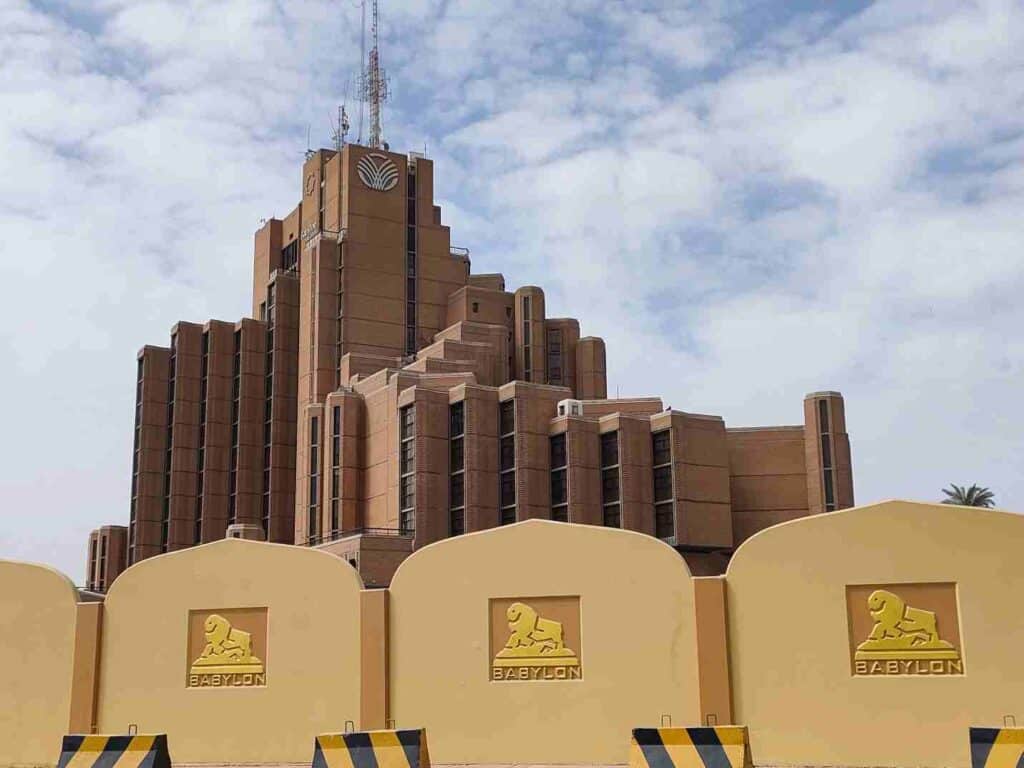
2. The new headquarter of the Central Bank by Zaha Hadid
Zaha Hadid, the Iraqi architect, is somebody all Iraqi can be proud of. She was even called architecture’s one and only diva. Even after she died in 2016, several of her designs are under construction. Including the Central Bank building that stands out in the landscape of Baghdad, and you can see it from several points of the city. As one of her final works, she was commissioned to rebuild the Central Bank of Iraq, destroyed by the attacks of 2010 in her home country. The project was not without a challenge.
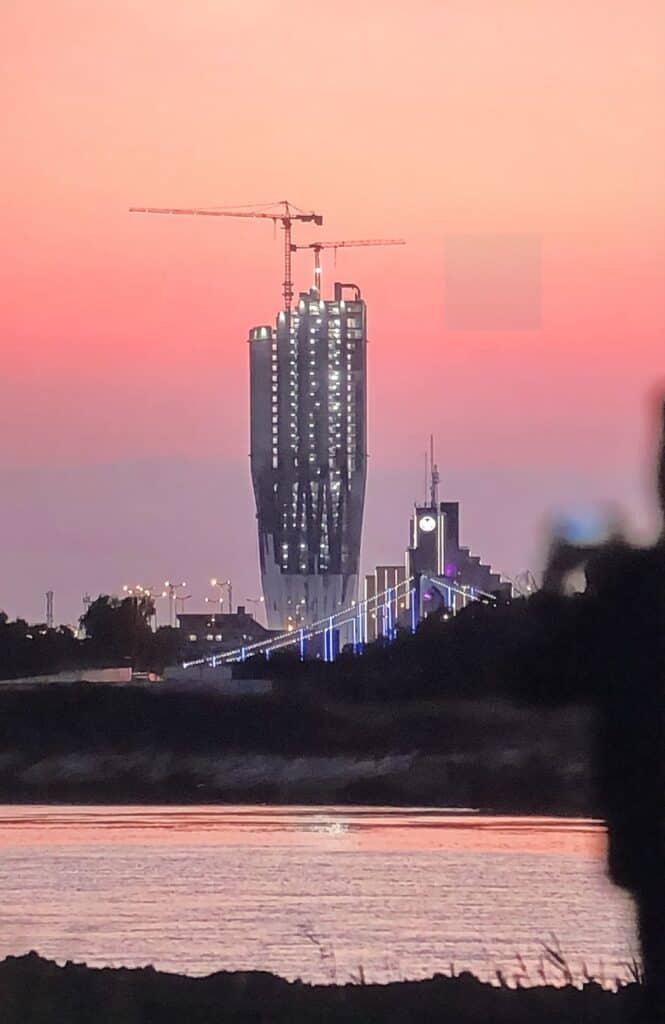
The Islamic State expanded its influence in Iraq, deterring foreign investors from investing in a country with high-security risks. The 172-meter-high skyscraper stands in the center of Baghdad at the banks of the Tigris river and is already one of the most remarkable structures. She put extra emphasis on equipping it with the highest standards to withstand blasts and attacks in a country suffering so long under wars and aggression.
3. The current Central Bank building
In 2003, looters broke into the National Museum of Iraq during the second Gulf War, taking 15,000 objects in 36 hours.
The professor the Michigan University, Piotr Michalowski:
“The plundering of the Baghdad Museum is an unparalleled tragedy in world history. It is as if the Uffizi, the Louvre, or all the museums of Washington D.C. vanished from the earth”. (Source: The Thieves of Baghdad by Matthew Bogdanos)
Though many of the artifacts were regained, many are still missing. Before leaving the Museum, the staff made enormous efforts to save the collection. Apart from 5 employees of the Museum, no one else knew about the secret place where some of the most valuable artifacts were hidden. They swore to the Quran that they never give it away. The treasures of Ur and Nimrud were found in 2003 in the cellar of the Central Bank. It took a while for the American customs agent to recover them since the vaults were flooded with water. Here they found
– the golden crown of Nimrud: one of the nicest examples of goldsmith work in the Middle East from 900-800BC from the royal tomb of Nimrud;
– the golden necklace of Nimrud: It was next to the crown in the cellar of the Central Bank;
– Cylinder seal: the earliest is from Uruk, 3500BC. They wore it in the neck. Its relief served as the authentic signature of its owner. It is usually smaller than the thumb. The market value of a cylinder seal is 25 000 USD. (Source: The Thieves of Baghdad by Matthew Bogdanos)
Location: along Al Rasheed street before the main bazaar opposite the Murjan Mosque.
4. The central building of the University of Baghdad (permit needed for a visit)
The central building of the University of Baghdad strikes the eye from a distance. I had the chance to visit it personally because my friend in Baghdad arranged the permit. The central tower serves as the university’s administrative center with offices. It gives a perfect orientation at the campus and is the most common meeting point for students, seen from most parts of Baghdad. It probably offers the city’s best view since the Baghdad tower’s revolving restaurant is closed now.
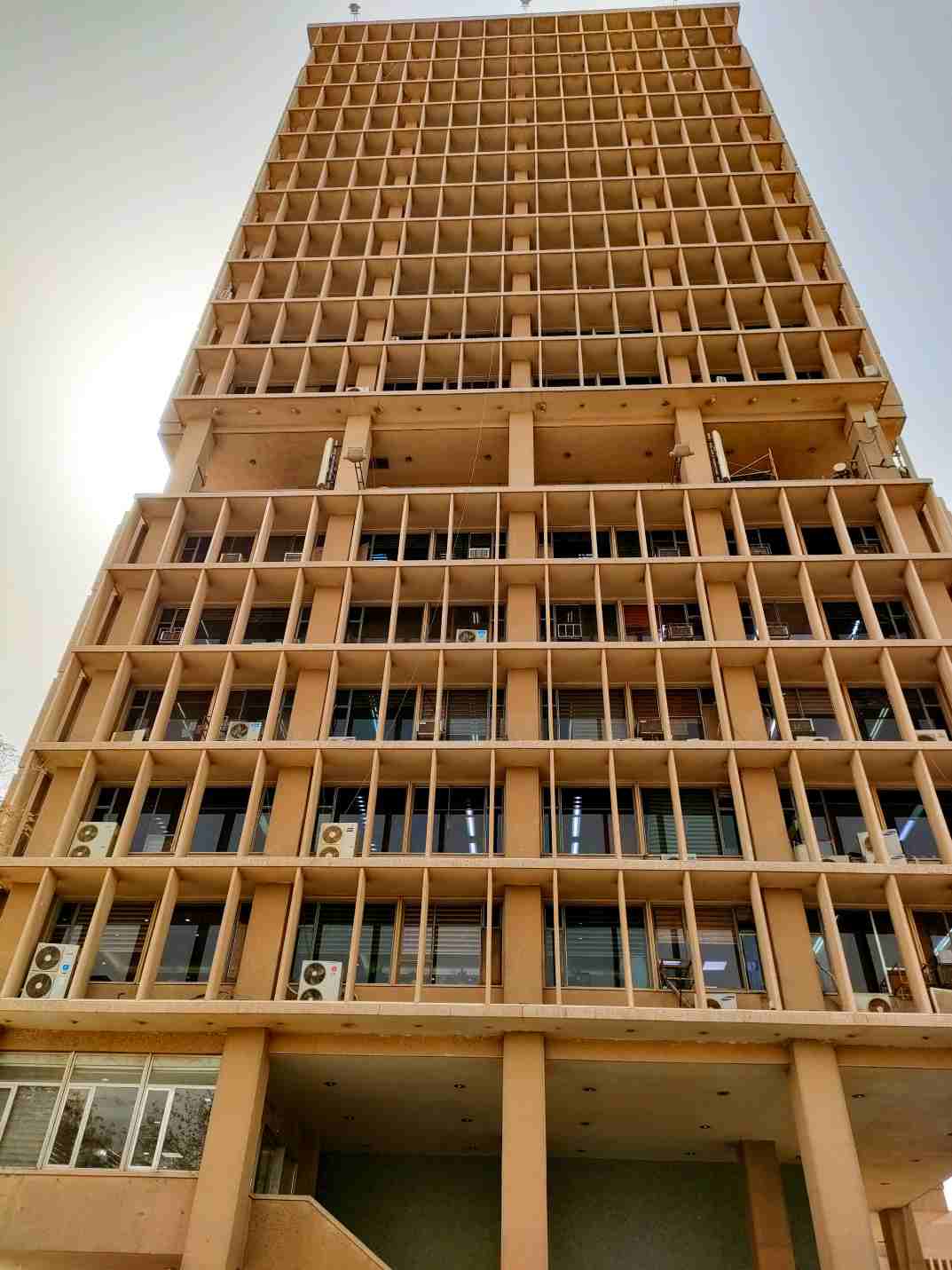
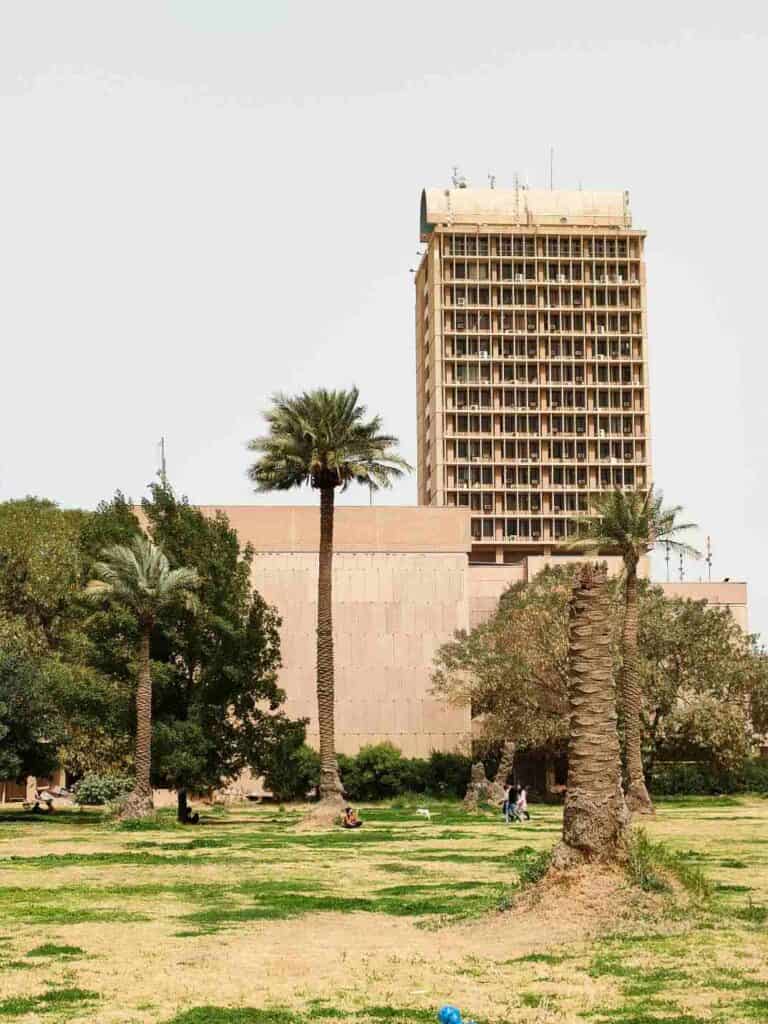
I learned more about its history in the museum since the foundations were laid down in the 1950s; I saw pictures of the first classes who graduated. The university has an expansive green area that is perfect for students to enjoy their free time between classes. There is a café, restaurant, and even a small shopping mall where they can buy everything from stationery products to clothes, cosmetics, and even kitchen utensils. It is now one of the best and most prestigious universities in Iraq and was the first university in Iraq and the second-largest in the Arab world.
5. Baghdad Tower or International Saddam Tower – Maamoon Telecommunication Center Tower.
It was damaged in the first and second Gulf wars and was renamed after the US invasion of 2003 the Baghdad Tower. It had a revolving restaurant on the top with the best view of Baghdad, but it does not work now.
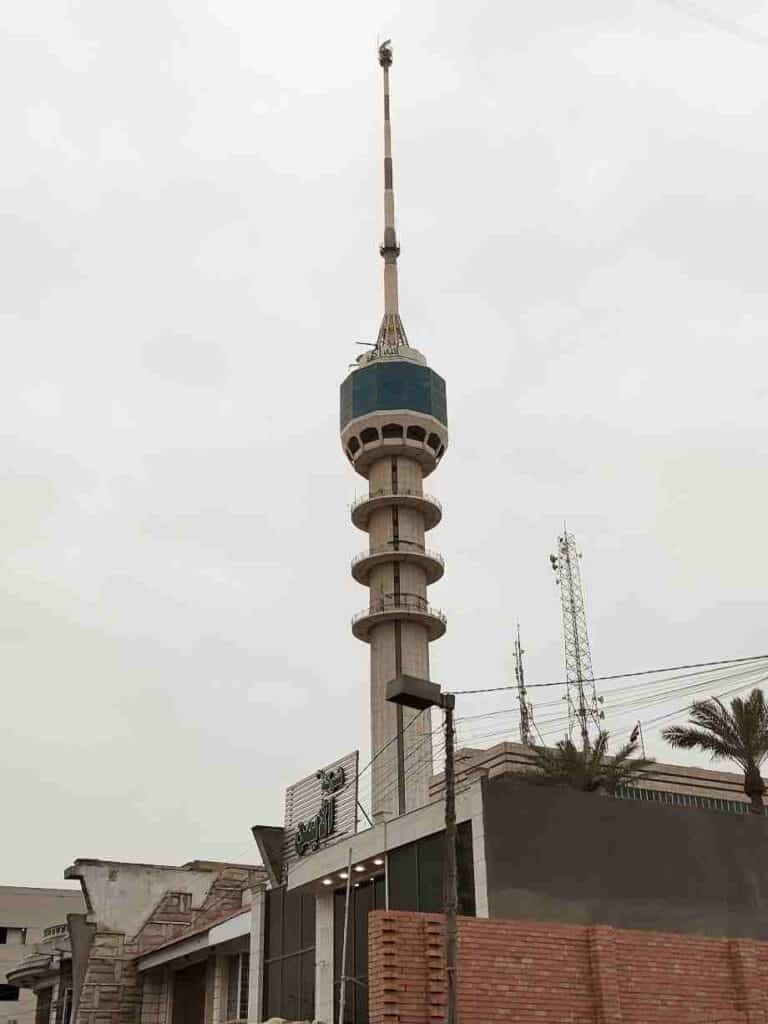
6. The Baghdad railway station
The train station of Baghdad has an impressive colonial architecture with a green dome. The station, built by the British in 1948-1953, offered telegraph services and had a bank, a post office, a saloon, shopping areas, and a restaurant. This is the biggest railway station in Iraq. If you travel to Basra or return on the night train, you can see a bit of the station’s interior.
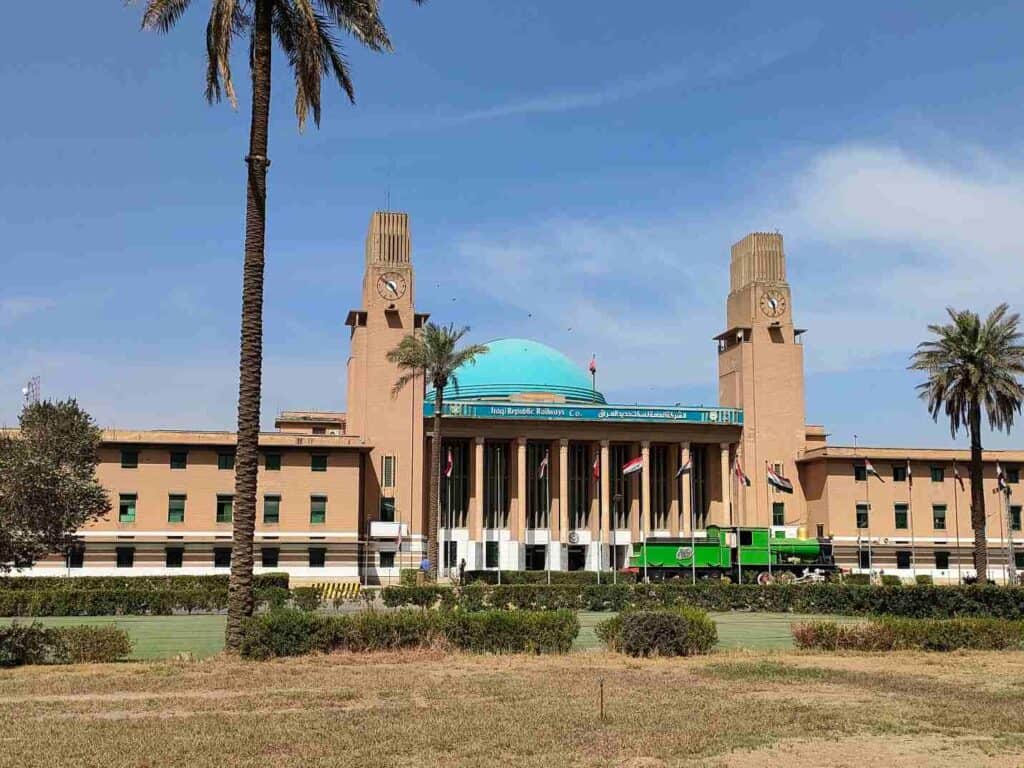
DAY 1: International zone, Iraqi Museum, Railway station, Save the Iraqi culture monument – Zubaida tomb – Saddam mosque – al Zawra park
1. International (Green) Zone
It is now the center of Iraq’s parliament and government and home to the present president. The zone also houses the largest American embassy in the world and several other smaller embassies such as the British and other Commonwealth consulates.
The Green zone or international zone was the headquarters of the Coalition Provisional Authority (CPA), the American occupation administration in Iraq during the second Gulf war of 2003. It was the former palace area of Saddam Hussein. He created an enclosed area at the riverfront with luxurious villas, government buildings, shops, and even a hospital. All that to avoid mingling with the masses. Here everything was nicer, cleaner, and greener, with no street vendors and beggars.
The best books to read about Iraq
The Americans converted the area into a “Little America” with all the amenities where Iraqi laws and customs didn’t apply. Women jogged on the sidewalk in shorts and T-shirts, and a liquor store sold imported beer, wine, and spirits.
Most Americans lived in a bubble, and those who dared to go outside and talk to locals called their home “The Emerald City”.
The life outside the gate was in sharp contrast to that. More than half of working-age men were unemployed, and there was a shortage in everything: electricity, medicine, food. Suicide car bombings were so frequent that many Iraqis stopped leaving their homes unless they absolutely had to. But the Emerald City felt nothing out of that. It wasn’t connected to Iraq’s electrical transmission grid. They believed it was a 100% safe zone until the attack on the al-Rasheed hotel.
The Americans set up a Governing Council based on ethnic quotes among Shiite and Sunni Arabs, Kurds, Christians, and Turkmen in a country that hadn’t focused on ethnic and religious divisions before the war. It was probably the biggest mistake of the invaders, who continued praising their “mission” to set up a Western-like democracy in Iraq. This had irreversible consequences on the Iraqi society, who started to identify themselves by race and sect, leading to civil war.
There are three monuments you can see driving through the international zone:
– 14th July Monument
The 14 July Revolution or the 1958 Iraqi coup d’état ended the monarchy of the Hashemite rulers under the auspices of the British. King Faisal II, the regent, Crown Prince Abd al-Ilah, and Prime Minister Nuri as-Said were all assassinated during this coup and dragged along the streets of Baghdad. The leaders of the coup, Abdul Salam Arif and Abd al-Karim Qasim established the Republique of Iraq.
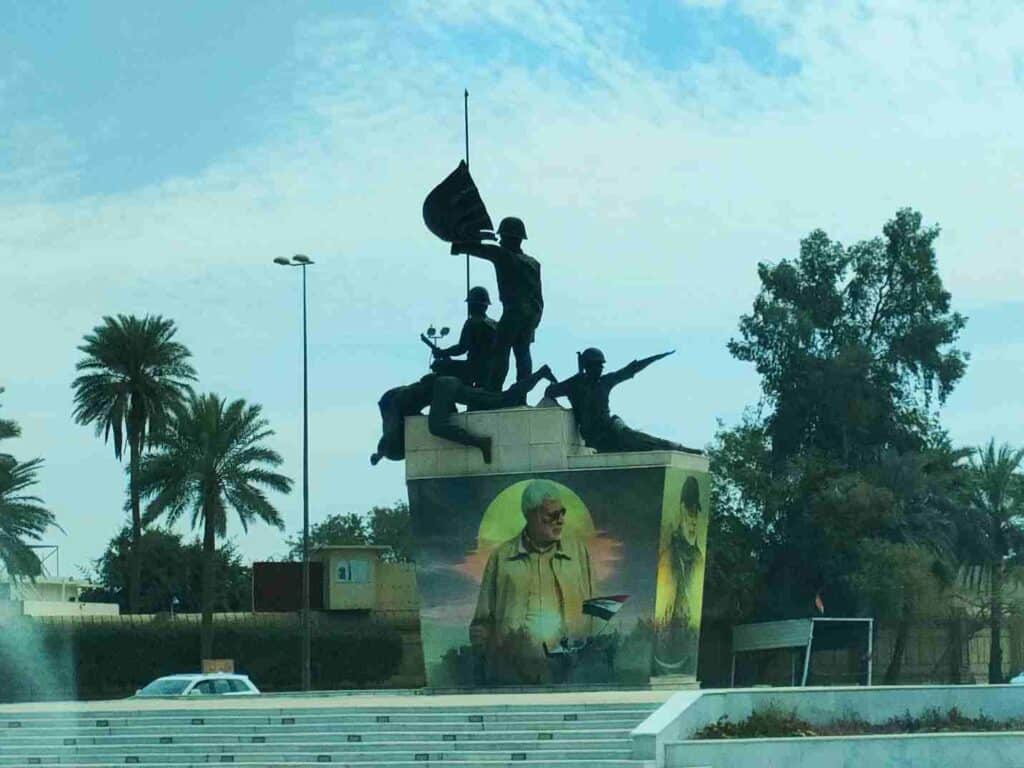
– Unknown Soldier Monument
The monument built in 1950 was supposed to represent a helmet and traditional shield dropping from a warrior’s dying grasp. After the fall of Saddam Hussein, the tomb was closed, damaged, and made inaccessible to tourists. It was part of a comprehensive Baathist program to nurture national pride, followed by the Victory Arch and the Al Shaheed monument. Next to the helmet, a spiral tower recalls the minaret at Samarra.
This was the second monument for the Unknown Soldiers. The first one was an arch-shaped memorial on Firdos Square, a modern design of the arch of Ctesiphon. They removed it to make space for the statue of Saddam Hussein in the early 1980s.
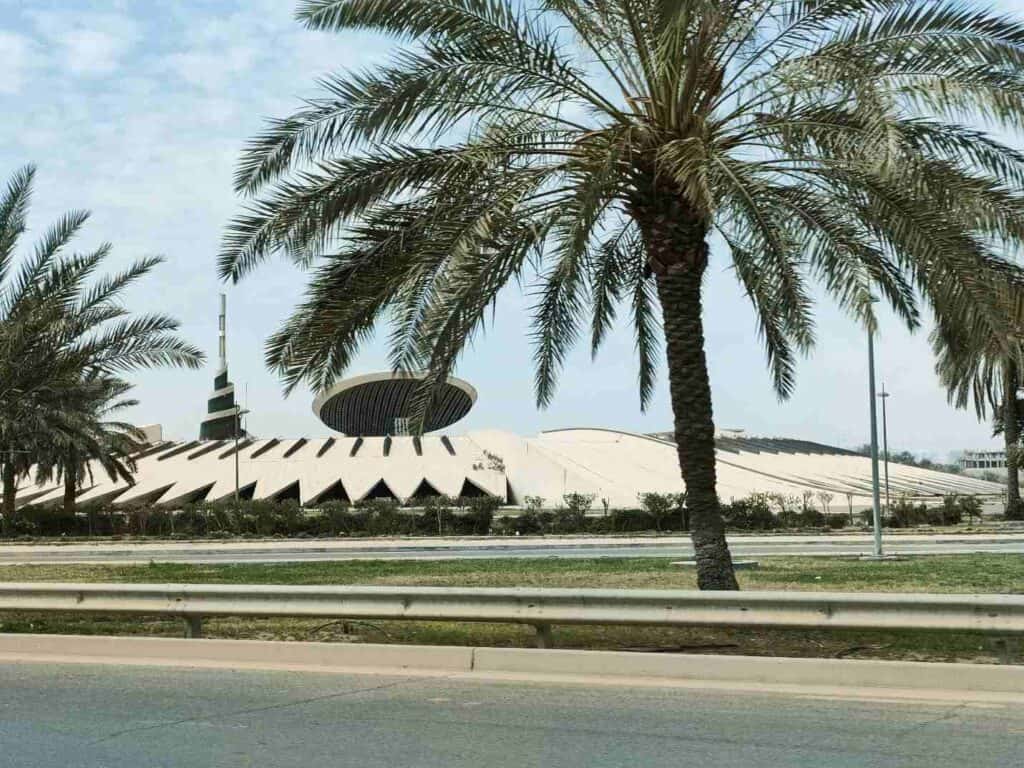
– Victory Arch
The gigantic structure displays Saddam’s hands holding two swords. Since no Iraqi foundry was big enough, the arms were cast in sections at the Morris Singer foundry in Basingstoke, England – the largest professional art foundry in the world. On the other hand, the swords were cast in Iraq. They gained the raw steel by melting down the weapons of Iraqi martyrs who died in the fighting.
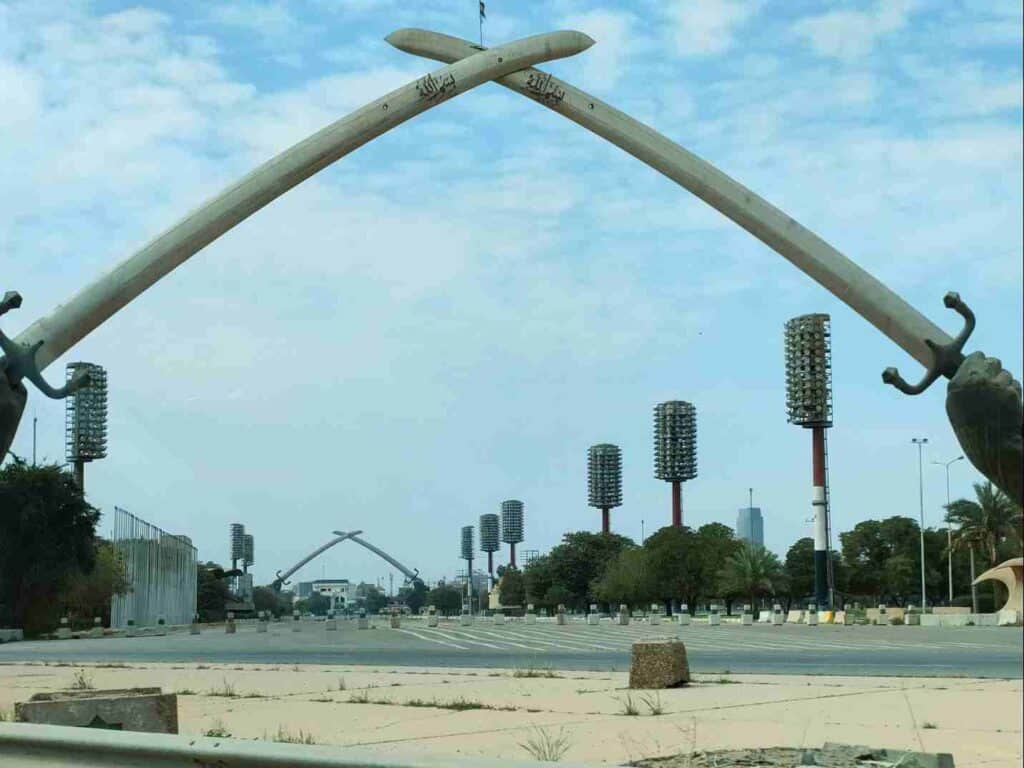
Important: anybody can drive through the Green Zone or International Zone without a special permit. When I traveled there, I was only allowed to drive through, however, tourists lately say that they could stop for a photo, and with a special permit, it is possible to access the monument of Unknown Soldiers and the Victory Arch. The area is open from 6am to 6pm. From the monument of Unknown Soldiers, you should be able to walk to the Victory Arch.
2. Iraq National Museum
The Iraqi National Museum has one of the largest archeological collections in the world. Gertrude Bell was the one who began collecting the artifacts that the foreign archeologists revealed during excavations started after WWI. The adventurous lady and expert of the Middle East in service of the British government wanted to keep them in Iraq and collected these findings in a government building.
Gertrude Bell was the first director of the Iraq Museum until she died in 1926. She was buried in the Christian cemetery in Baghdad, but it is often closed if you want to find it.
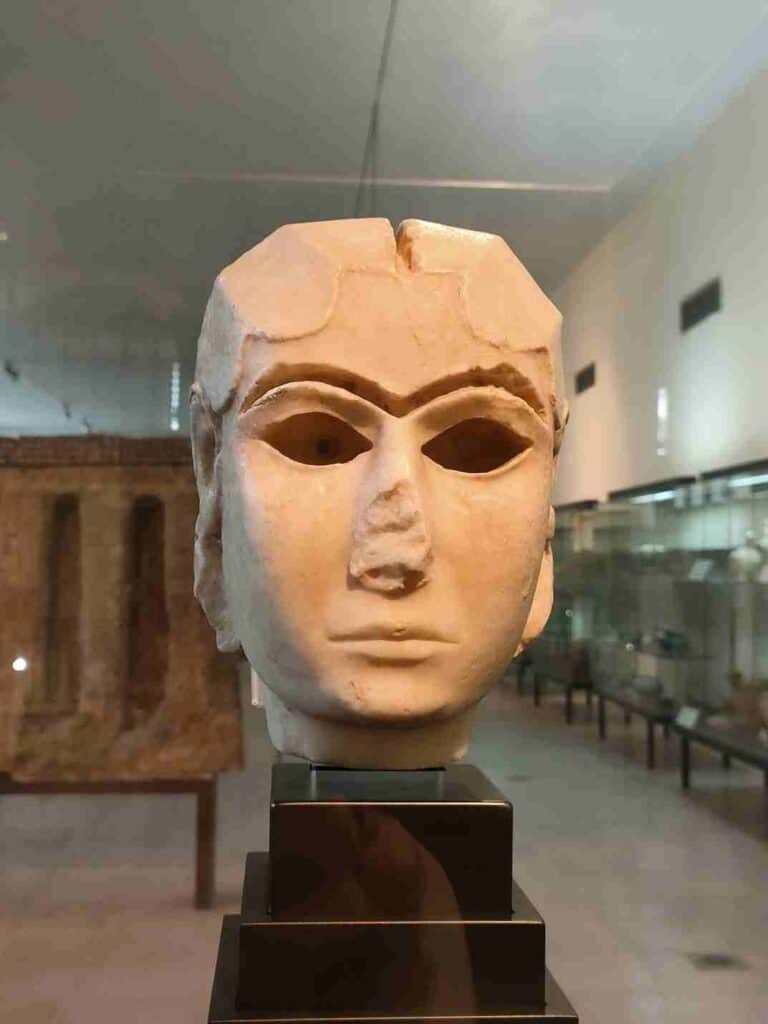
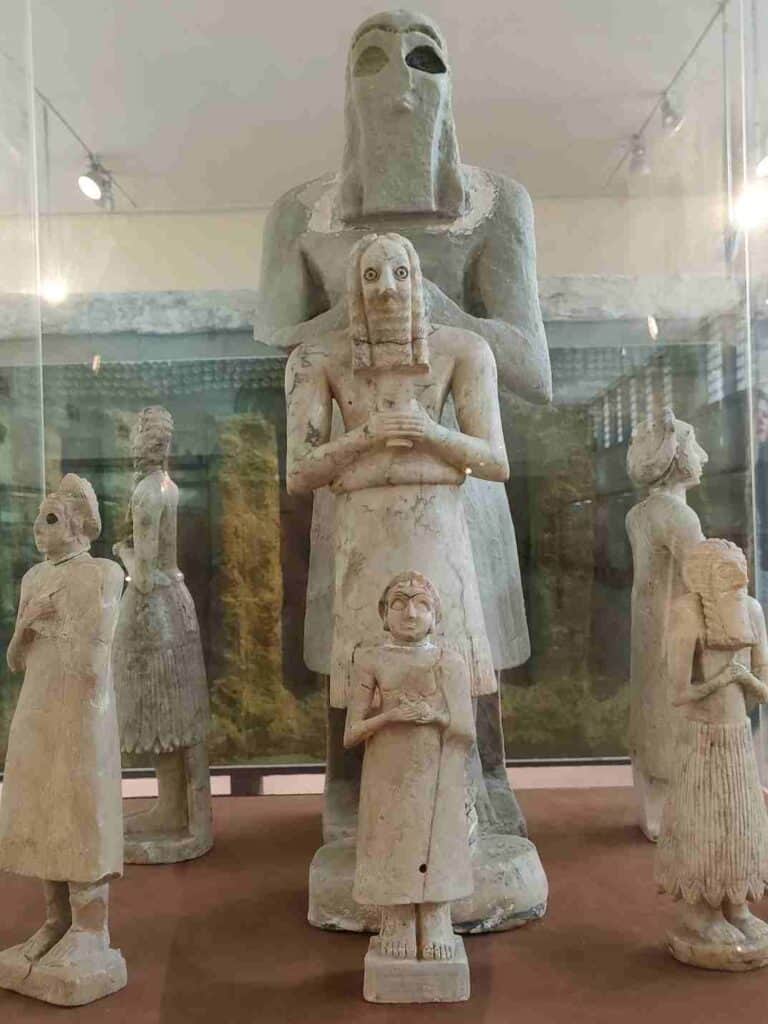
It was opened in a new place on 9th November 1966 and got the name Iraqi Museum.
The museum has artifacts from ancient Sumerian, Assyrian and Babylonian civilizations from the 5,000-year-old history of Mesopotamia. The world’s biggest coin collection is in the basement, all made of silver and gold, together with the world’s biggest cylinder seal collection.
On 28th February 2015, Iraqi Prime Minister Haider al-Abadi officially reopened the museum. The museum also has items taken from the Mosul Museum, as ISIS has taken it over.
The museum was looted during the war of 2003. There were plenty of copies in the collection, as Saddam took several times and hid the objects in different places around Iraq, but 40 out of them were invaluable.
I have used SafetyWing travel insurance for all my trips lately. It is a cheap medical insurance and covers almost all countries in the world, including Iraq.
Eleanor Robson, professor in Oxford, a member of the Brit Archeological Society:
“This is a tragedy of such volume that only past tragedies can be compared to that, like putting the Alexandrian library on fire in the 5th century.”
15 objects out of the 40 most valuable were retrieved, including the most valuable pieces: Warka vase, Warka mask, Bassetki statue, Assyrian ivory headrest from the 9th century BC, one of the two Ninhursag bulls.
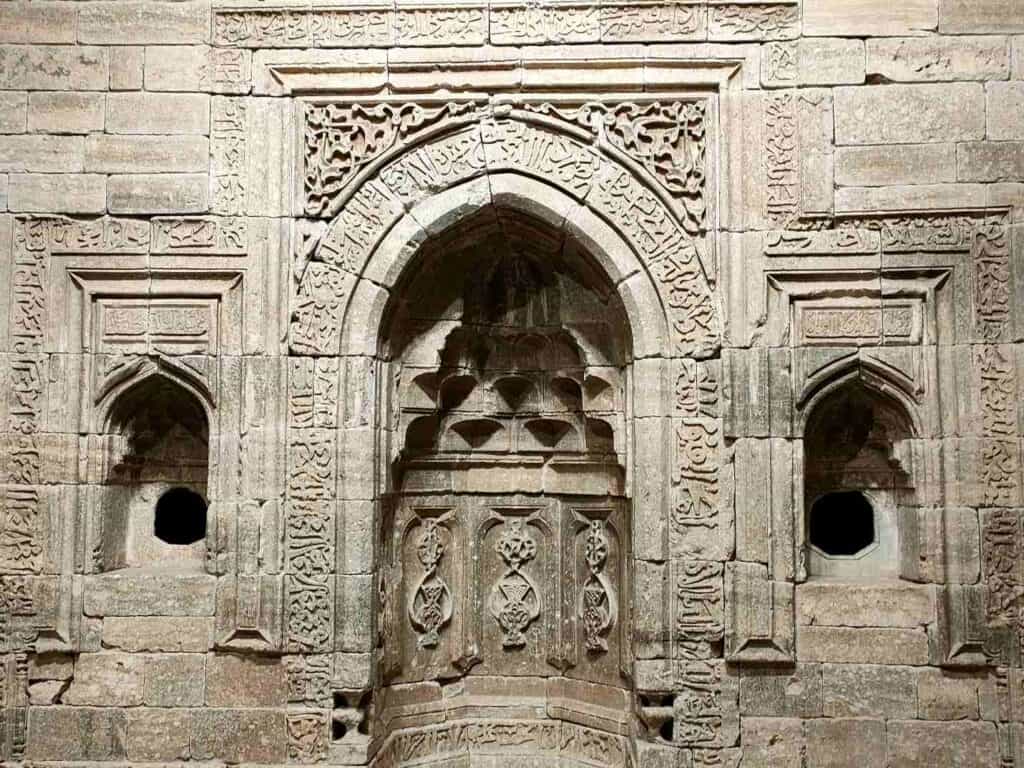
Many of the stolen artifacts were regained after. They promised full amnesty for those who returned the treasures. As a result, within days, they started to bring them back. They usually said that they were only guarding it. They realized that it was their national heritage and not that of Saddam.
The museum has opened its doors only partially since September 1980 during the Iran-Iraq War.
After a long time of being closed, the museum reopened in March 2022 and is now open to the public again.
Opening hours: 9 am – 1 pm (Sunday-Thursday), 9 am-5 pm (Friday)
Entrance fee: 25 000 IQD, free entrance to all on Friday
On the way from the Iraqi Museum to the Save the Iraqi Culture Monument, take a photo of the Railway Station, a beautiful example of colonial architecture
3. Save the Iraqi Culture monument
It is a modern structure built in 2010, symbolizing the urgent need to support Iraqi culture. The hands try to keep the broken cylinder, the symbol of Iraqi culture, from breaking and falling. The cuneiform on the seal reads writing began here.
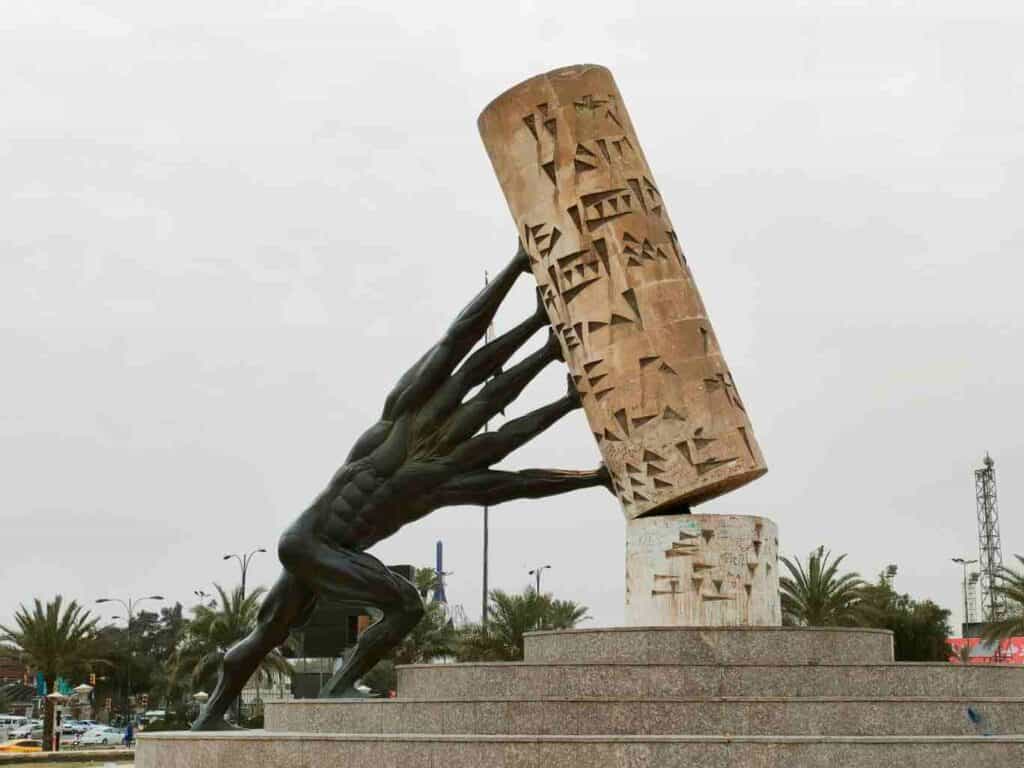
4. Al-Zawra Park
Next to the save the Iraqi culture monument is an expansive green area, an ideal place in Baghdad for families to picnic or try the Ferris wheel, one of the biggest in the Middle East. There is a small zoo, but do not expect much from that. At the weekends, On Friday and Saturday, the park gets busy with families, which is the best time to walk around.
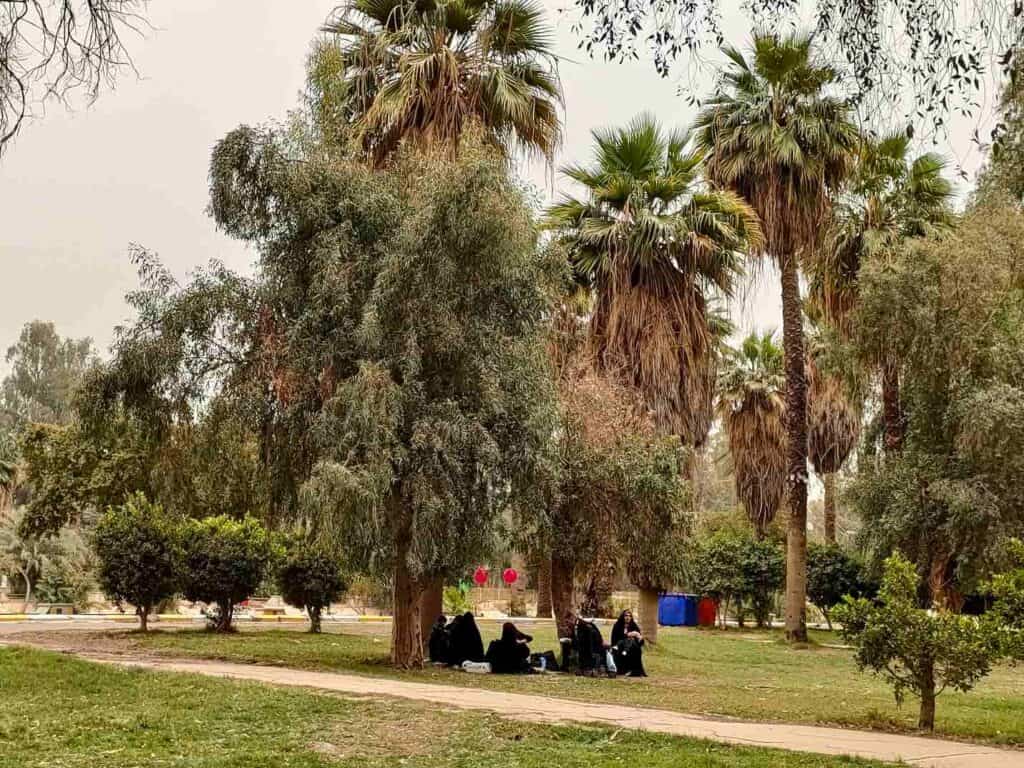
5. The unfinished Al-Rahman Mosque of Saddam Hussein
Saddam Hussein started to build the enormous mosque, but it was never finished after his fall. The grey structure stands abandoned because most people do not support completing the mosque initiated but the unpopular leader. The plan was to construct the third biggest mosque in the Middle East after Mecca and Medina, with a capacity of 15 000 people. An 84-meter-tall golden dome would have topped the mosque according to the plans. Several smaller domes surround the structure. It feels that time is frozen here, with the crane still towering over the grey concrete skeleton.
I have used SafetyWing travel insurance for all my trips lately. It is a cheap medical insurance and covers almost all countries in the world, including Iraq.
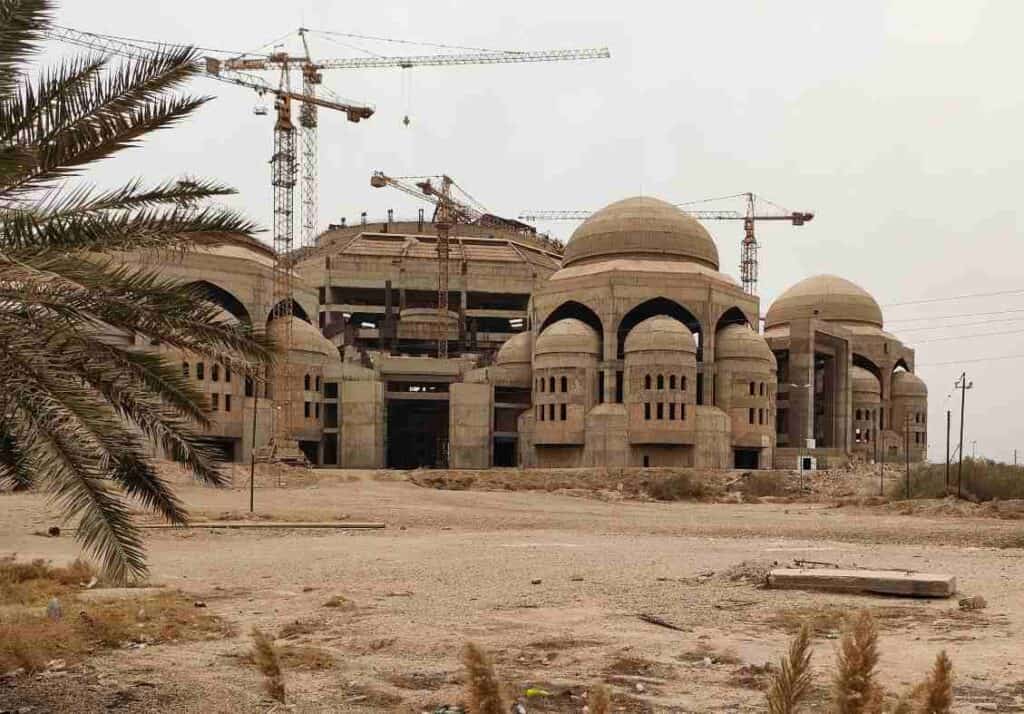
Saddam started the construction during a sensitive period in the 1990s under the Western embargo imposed on Iraq after it invaded Kuwait.
It was intended to be a Sunni Mosque, but after Saddam’s departure, the Shiite clerics took it over, although without permission. Due to the enormous costs, they never finished it.
6. Zumurrud Khatun Mosque and Mausoleum or Zubaida tomb
Zumurrud Khatun, the wife of Mustadi Abbasid khalifa, built the Al- Shafiya School, the Al-Khaffafeen Mosque, a Ribat (Islamic military and religious construction), and her own tomb before she died in 1303. However, only the minaret remained intact, one of the oldest in Baghdad. The unique dome above her shrine is one of Baghdad’s most important architectural pieces.
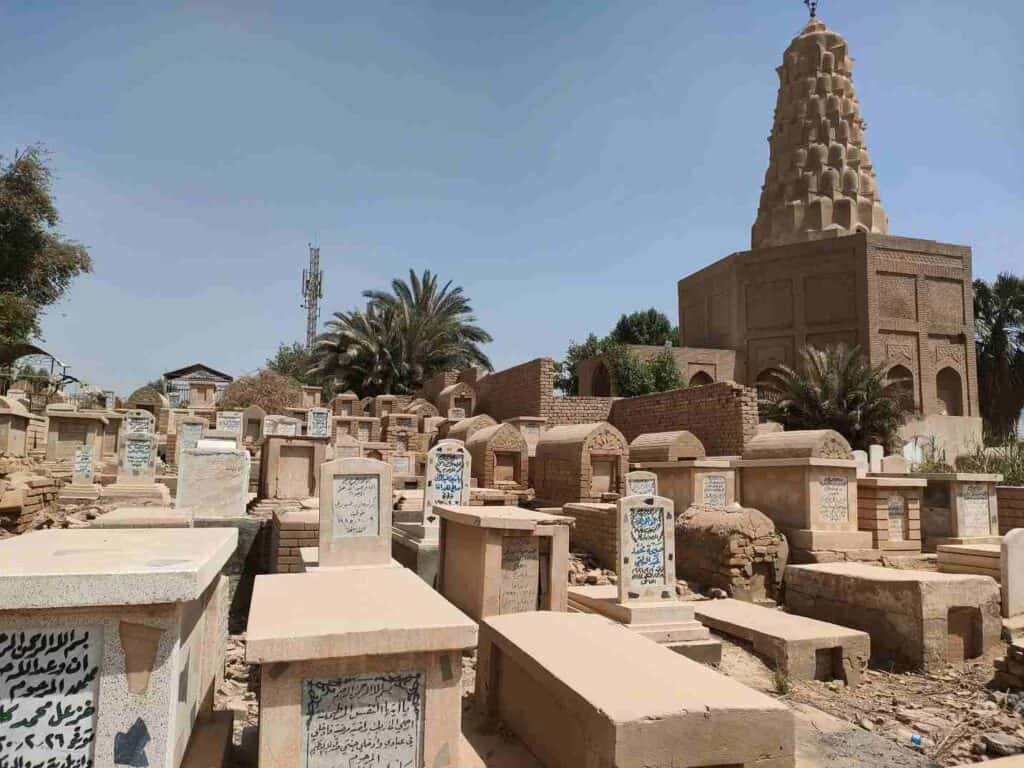
DAY 2: Al Rashid Street (Murjan mosque, Old Al Mustansiriya School – Baghdad souk – Baghdad Museum – Al Mutanabbi Street – Quslah square – Abbasid Palace – Haydar Khana- Antique market – Boat ride on the Tigris River
1. Observe the old houses on Al Rashid Street
Rashid Street, one of the most well-known streets of Baghdad parallel to the Tigris River, has a unique ambiance thanks to the colonial buildings that align it. It is worth looking into the side streets, where you can discover some excellent examples of this hybrid architecture with wooden balconies supported by columns. Some of them are heavily damaged but still able to recall their former splendor.
It has always been the center of political and cultural events, and by the 1940s, it was the center of nightlife with nightclubs, cinemas, and theatres along its 2km length.
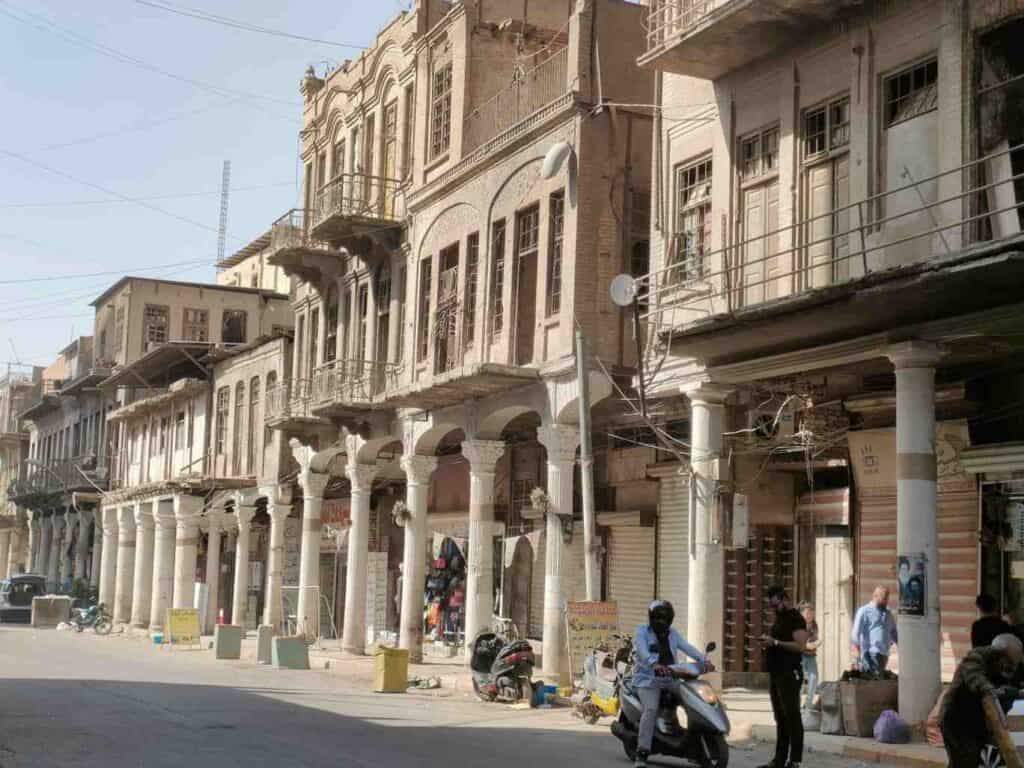
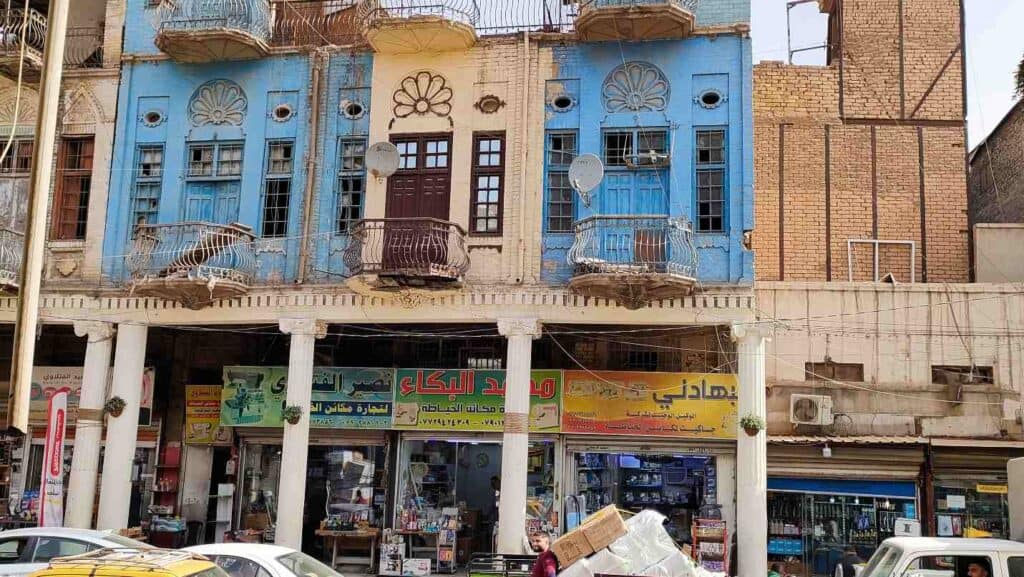
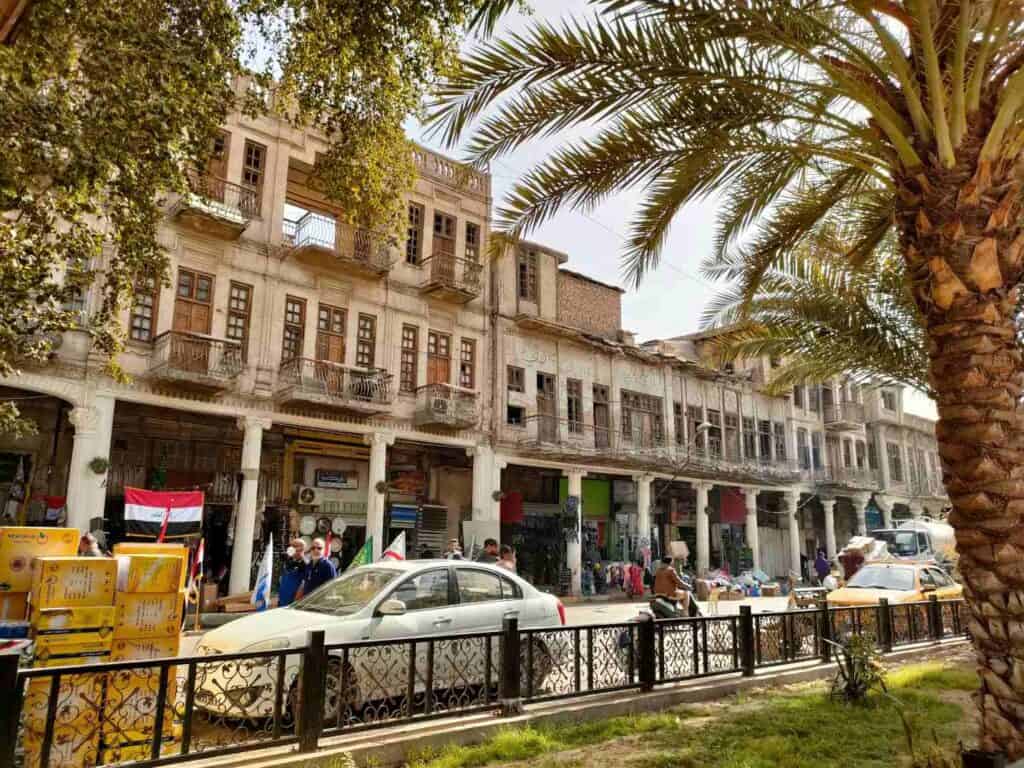
In 1925, Al-Rashid Street was the first in Baghdad to be paved for vehicles.
It was built by Khalil pasha, the military governor of Baghdad, in 1915, the Turkish governor after his victory over the British troops in Kut, as the first ”real” straight avenue of Baghdad and the first to be equipped with lights.
In 1958, the Crown Prince’s dead body was dragged and cut into pieces during the coup orchestrated by General Abd al-Karim Qassim, which ended the monarchy. Only a year later, the general barely escaped an assassination attempt of Saddam Hussein at the prominent avenue.
In 2019, Al Rasheed Street was a hotspot of the anti-government protests that swept over the country.
Khan Murjan – under renovation: Close to Al Rasheed Street in the souk, you may hear about one of the best examples of caravanserais in the Middle East. Like all caravanserais, it served as a resting place for merchants, who could feed their animals, get food and exchange their products before continuing their journey. Thanks to its brick arches, it is an architectural masterpiece. In the 1970s, it was a popular nightclub and restaurant for the elite with belly dancing, music, and excellent food before being converted into a souvenir shop and tea house. The floods of the Tiger River heavily damaged it.
They may tell you that it opens in the morning; however, after having received a lot of confusing information, I personally talked to the director of the project, and he said it is not open to the public due to renovation.
2. Murjan Masjid
Along the Rashid Street, it was the entrance gate that remained from the madrasa (religious school) built in the 14th century. You can take nice photos from outside of the star-shaped patterns of the brick façade. It was founded by Amin al-Din Murjan, the governor of Baghdad. He was buried here, but they demolished the dome and the tomb during the enlargement of the Al Rashid Street.
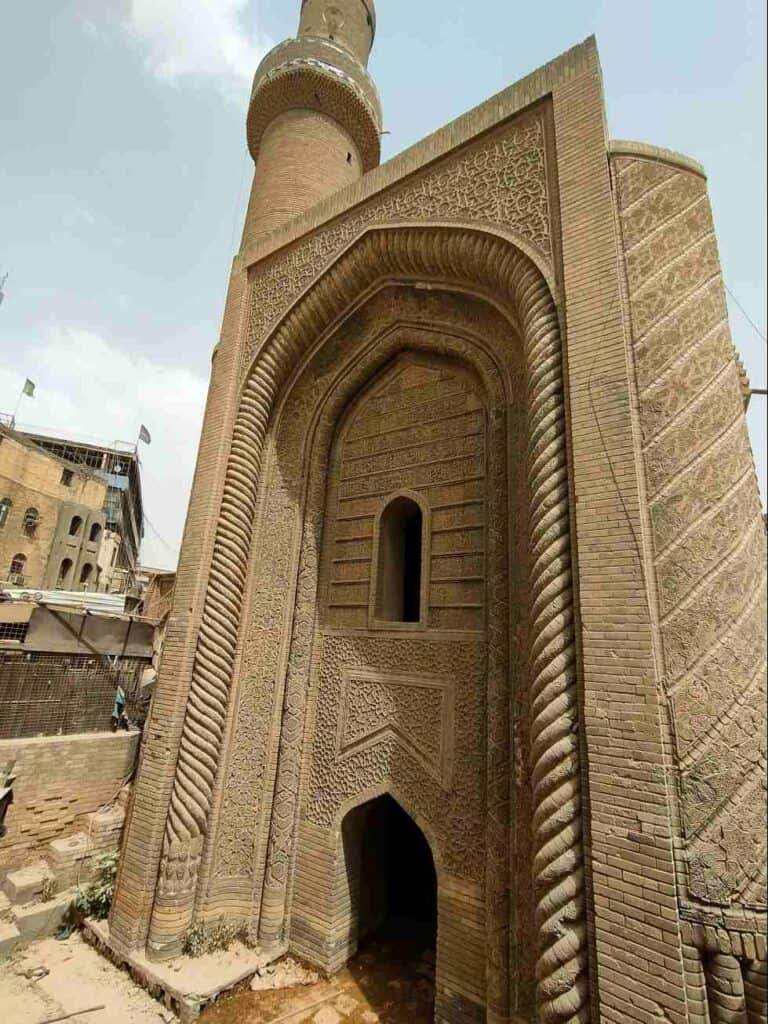
3. Al-Mustansiriya School – one of the best places to visit in Baghdad
Caliph al-Mustansir, the second-last Abbasid ruler, built the religious school in 1234 and united the four primary Islamic schools of law for the first time: Hanafi, Maliki, Shafi’i, and Hanbali. Until then, they specialized in only one of them. The students also studied mathematics, history, literature, and geography. We can say that it was the first university-like institute in the Arab world. It had a separate kitchen, bath, hospital, and water supply. Students had their rooms on the top floor. With a library of 80 000 books, it was one of the most important centers of learning in the Islamic world. The madrasa lost importance during Turkish times and was converted into a custom house in the 19th century.
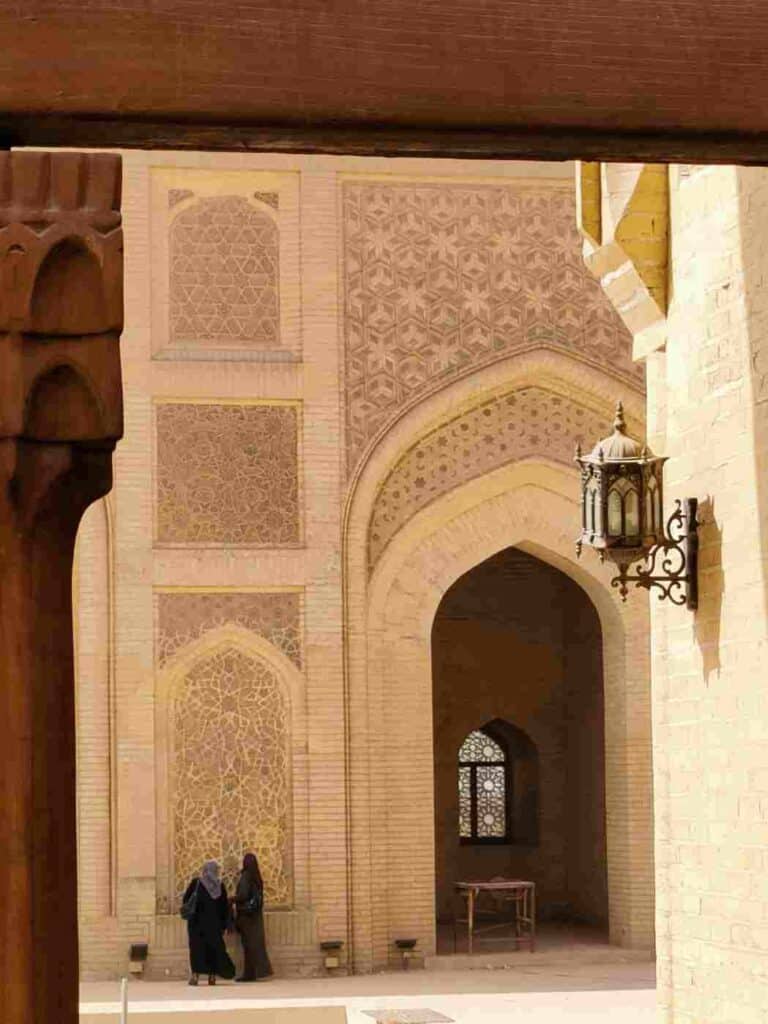
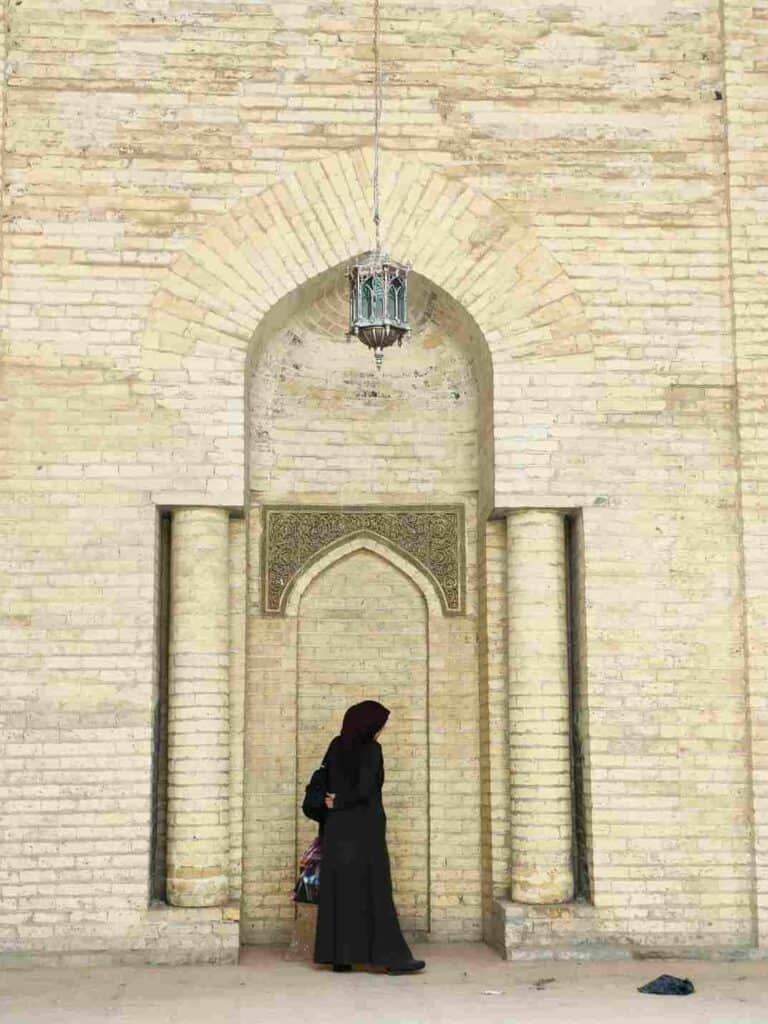
Important: despite being one of the main attractions of Baghdad, your GPS only shows the modern Al-Mustansiriya University, which is very confusing. In order not to miss it, follow the riverbank, and you will find it close to the Al-Shuhada’a bridge approaching from the souk.
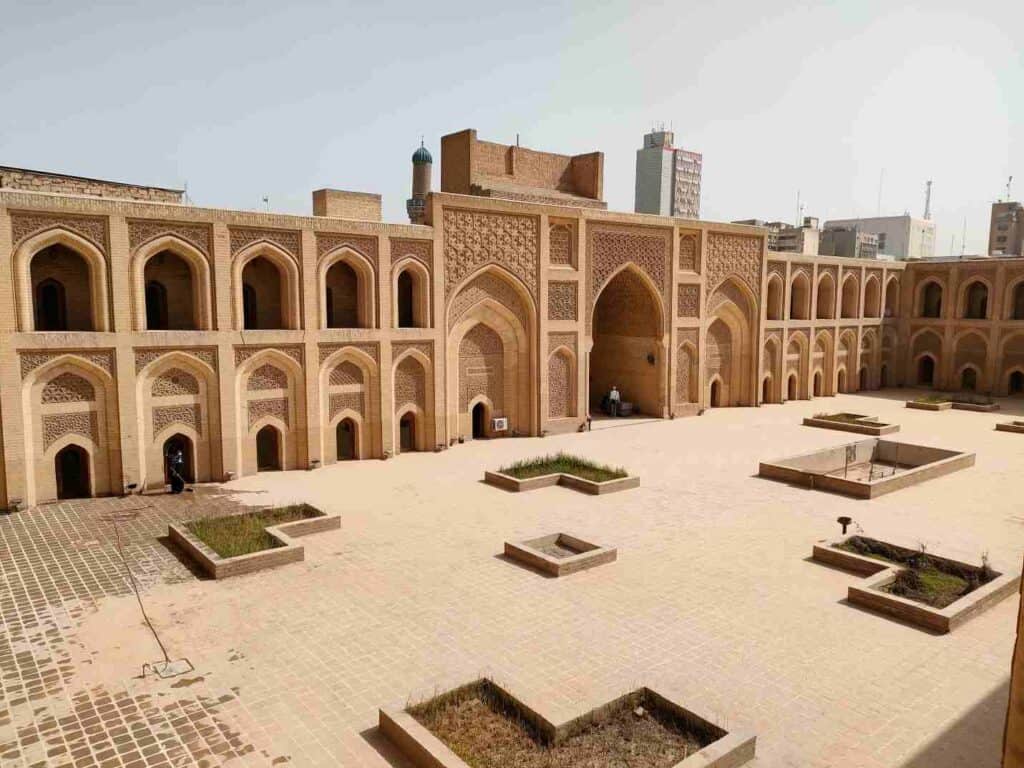
Opening hours: 9 am – 2 pm
Entrance fee: 25 000 IQD
4. The Souk of Baghdad
The bazaar, the maze of covered alleys with countless shops classified according to what they sell (shoes, textiles, carpets, copper, etc.) concentrates between the Al- Shuhada’a and Ahrar bridge. The area has been a market for a long time, but the current bazaar was built in 1818 by the Governor Baghdad.
The copper bazaar (al-Safafeer) is the most famous part of the souk. Baghdad’s ancient coppersmith’s market has existed since the Abbasid period and is part of the cultural heritage.
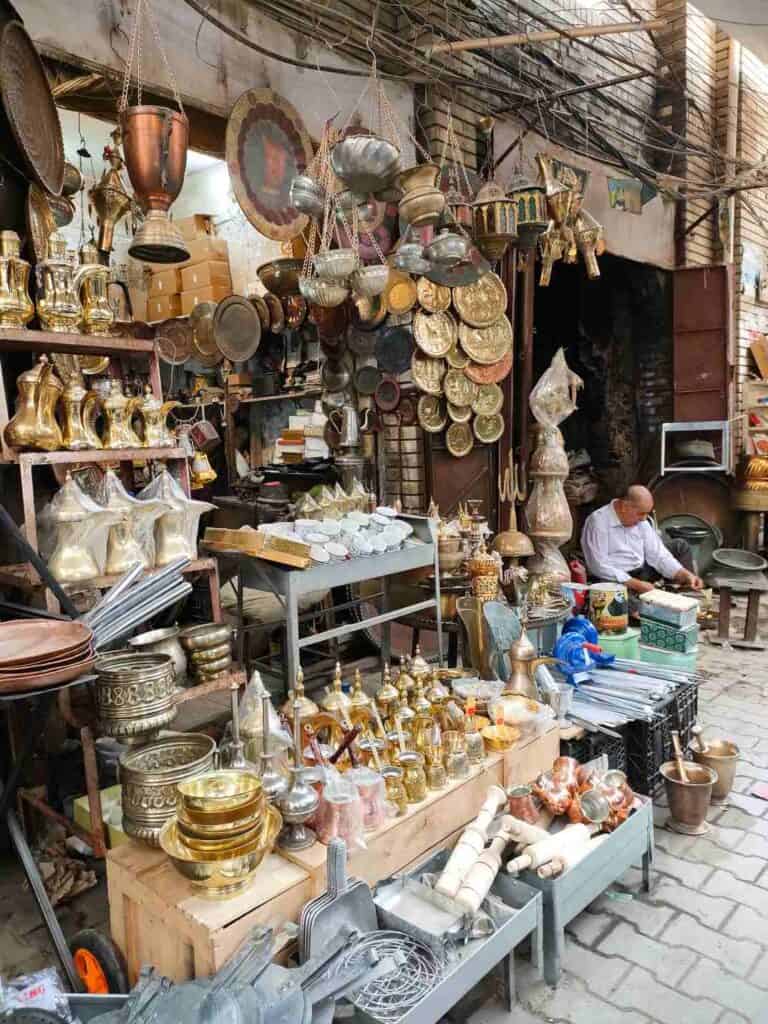
5. Baghdadi Museum
The Baghdadi Museum is worth a short visit. It introduces Baghdad’s traditional professions and life scenes with true-to-life wax figures. You get an insight into local dresses, wedding ceremonies, Islam customs, and all that is displayed in a traditional Baghdadi house.
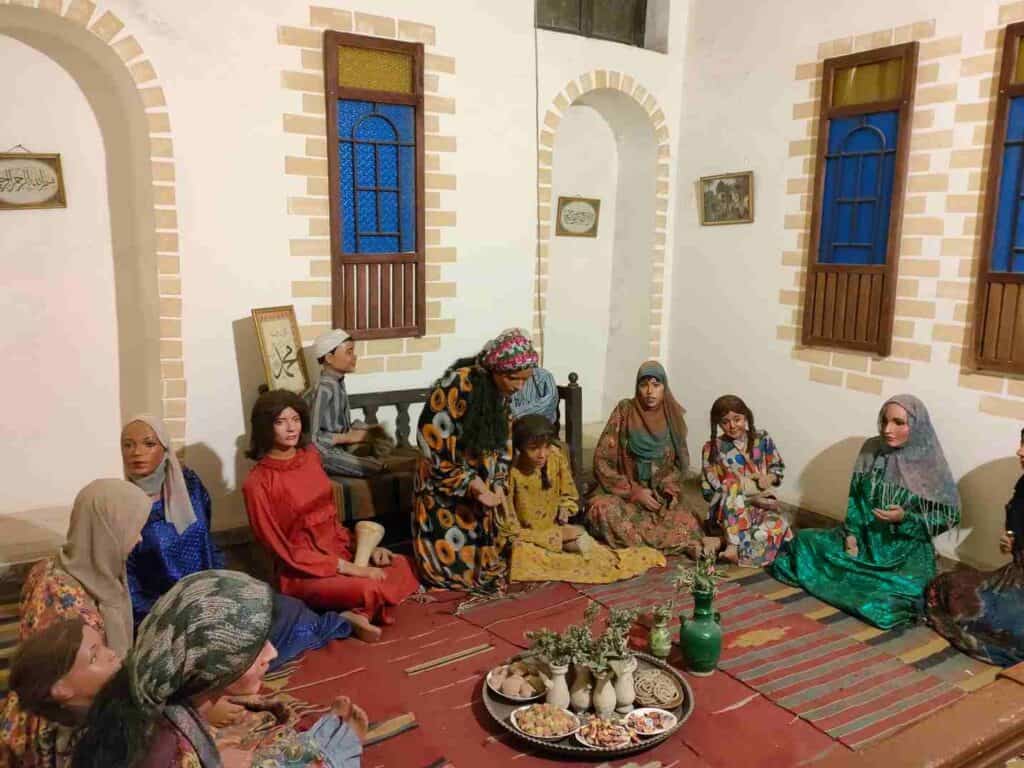
Entrance fee: 1000 IQD
Opening hours: 9 am – 2 pm every day except Saturday
6. Al Mutanabbi street – visit both during the day and at night
The Al Mutanabbi street is the iconic one-kilometer-long winding street in the old part of Baghdad, a favorite place for locals to stroll around in the evening when it gets illuminated. Aligned with bookshops, bookstalls, cafes and galleries, the street named after the poet from the 10th century has always been the educational center of the capital. Al Mutanabbi was also the venue of the first book market in Baghdad and never ceased to attract all kinds of intellectuals.
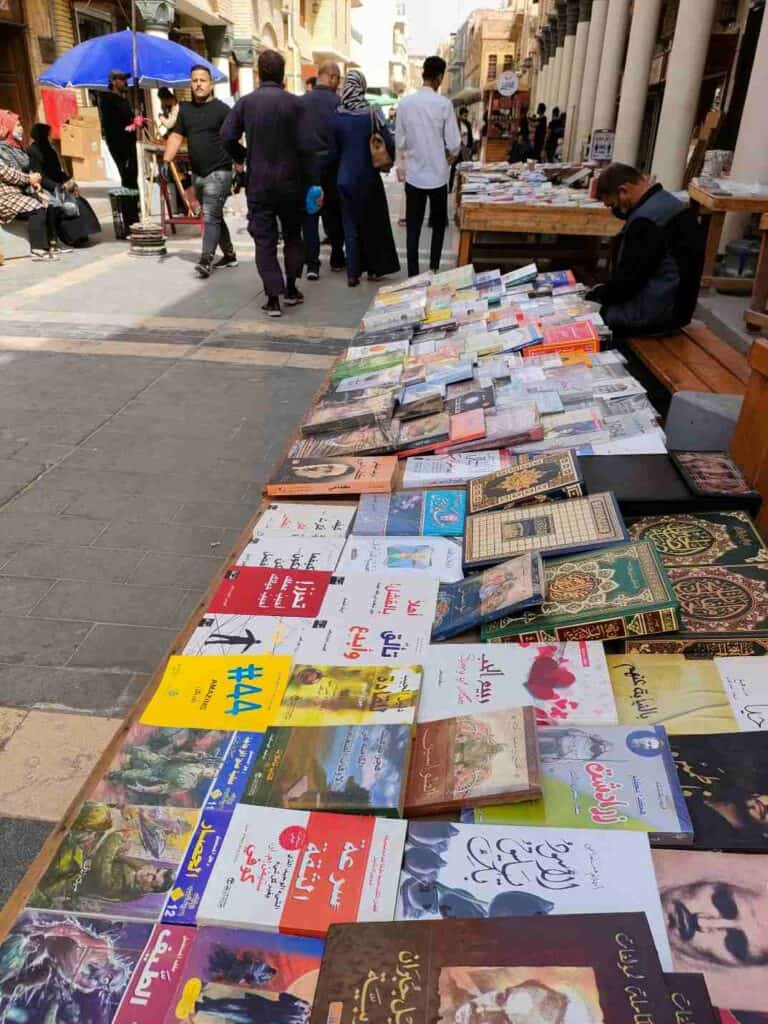
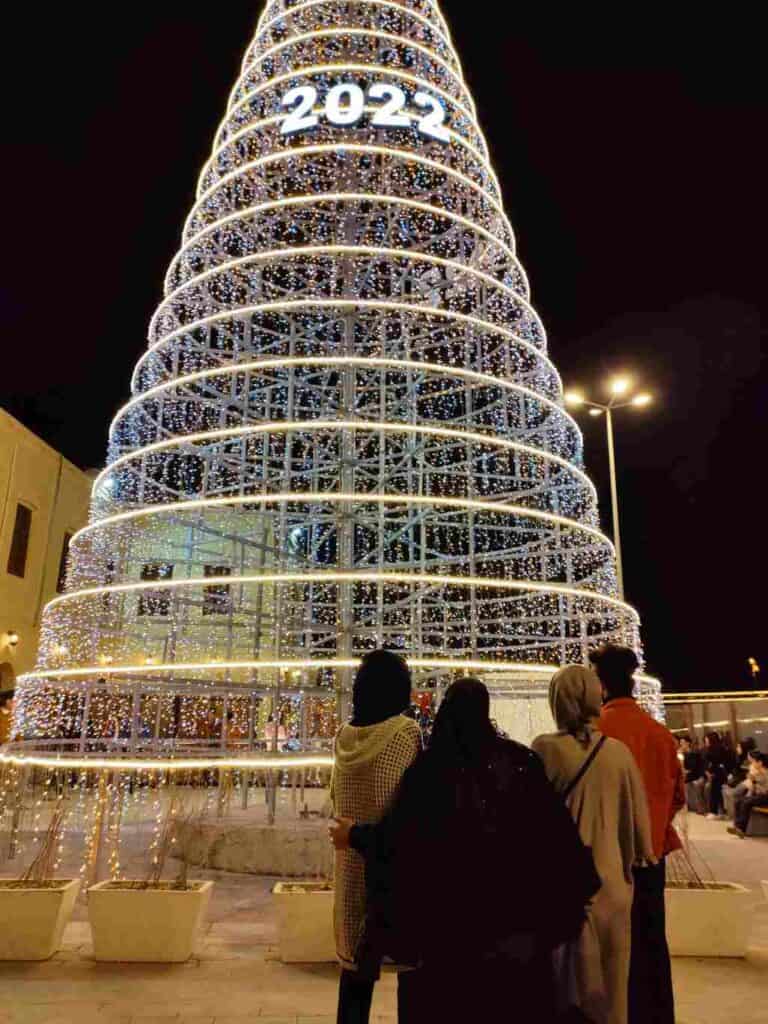
Some decades ago, Iraq’s education system was envied in the Arab world with the highest literacy rate. The old Arabic proverb said: “Egyptians write, Lebanese publish, Iraqis read”.
However, on 5th March 2007, a car bomb exploded on the most reputed Street in Baghdad during the civil war, with more than thirty people killed and over a hundred wounded. The attack against “the soul of Iraq” shocked the Iraqi society at that time already gotten used to living in unsafe conditions.
I visited Al Mutanabbi on the day of the anniversary of the attack, on 5th March, when people gathered in front of the famous Shabandar café, lighted candles, and commemorated the event. The bomb killed the café owner, Mohammed Al-Khashali’s four sons and one of his grandsons. After lengthy works, the street could reopen in 2008.
Young people stroll around, start singing, have a cup of tea, smoke nargileh in one of the nearby cafes, and enjoy the riverbank of the Tigris. By the evening, bookstalls and most shops of the bazaar close and for that, it is better to come back in the morning.
7. Stop for a drink and nargileh in Shabandar Café
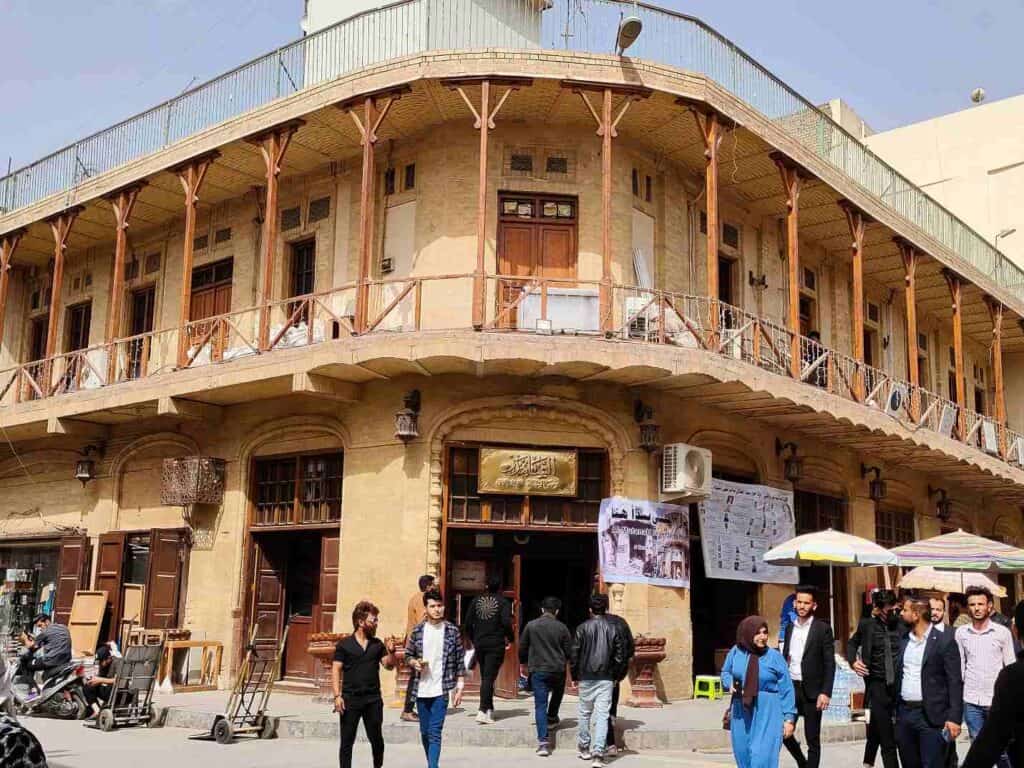
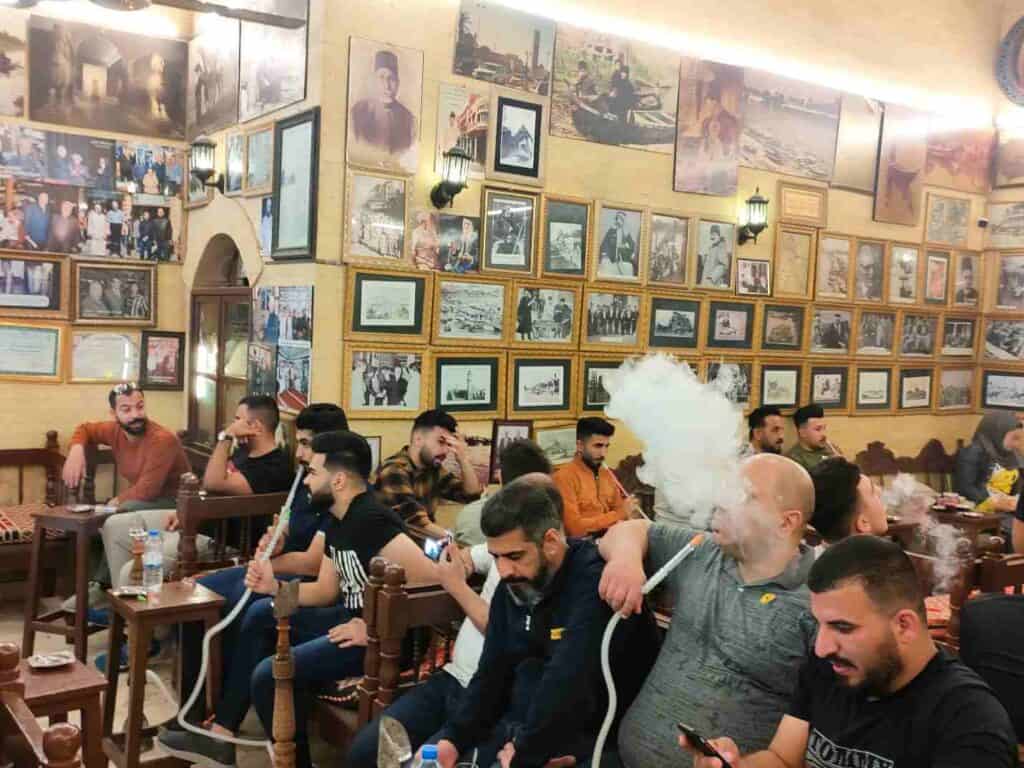
8. Qushla square
Once you are in Al-Mutanabbi street, do not forget to visit Qushla square with the iconic clock tower donated by George V in the center. It is said to be the oldest standing clock tower in the Middle East
The square is surrounded by a historic building, that the Ottoman Government used as a military base and barrack. Iraq’s first king, Faisal I, was crowned in the courtyard in 1921.
Opening hours: till 2pm
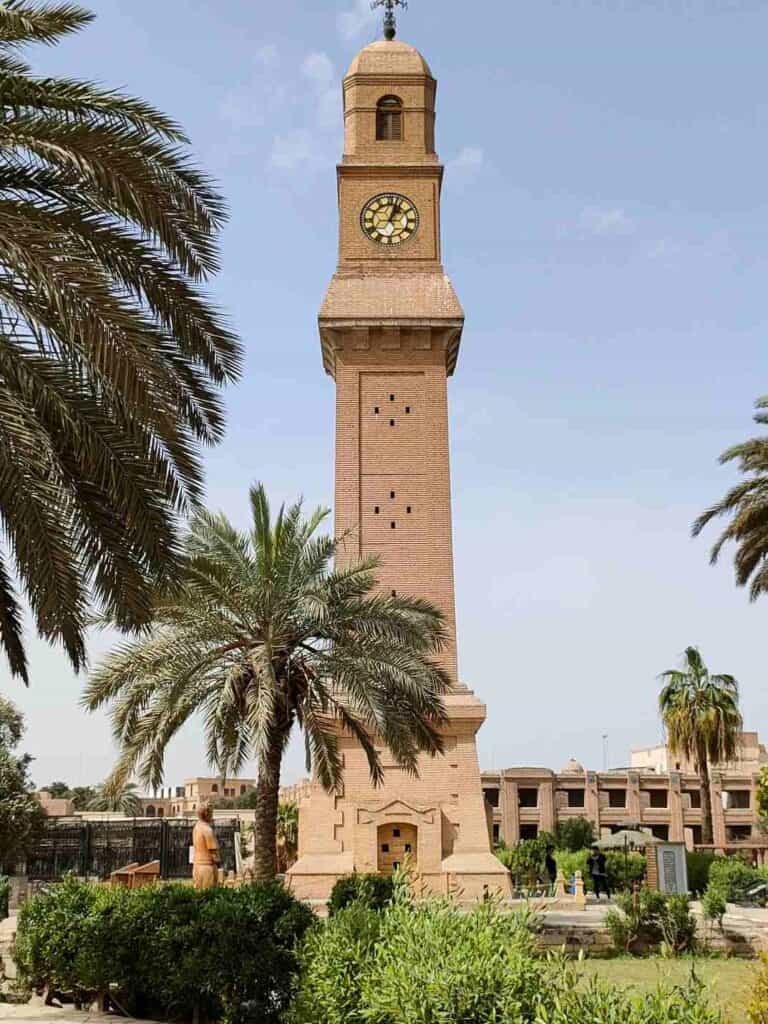
9. Abbasid Palace – one of the best places to visit in Baghdad
You must not miss the Abbasid Palace, one of the highlights of Baghdad. It has a very similar architecture to that of the nearby Al-Mustansiriyya school, and some scholars believe it was a school of Islamic theology built in the 12th century. Although the real function of the building is unclear, most researchers thought it was the palace of Nasir li-Din Allah Khalifa (1175-1225). Its main entrance, a giant iwan, faces the Tigris river.
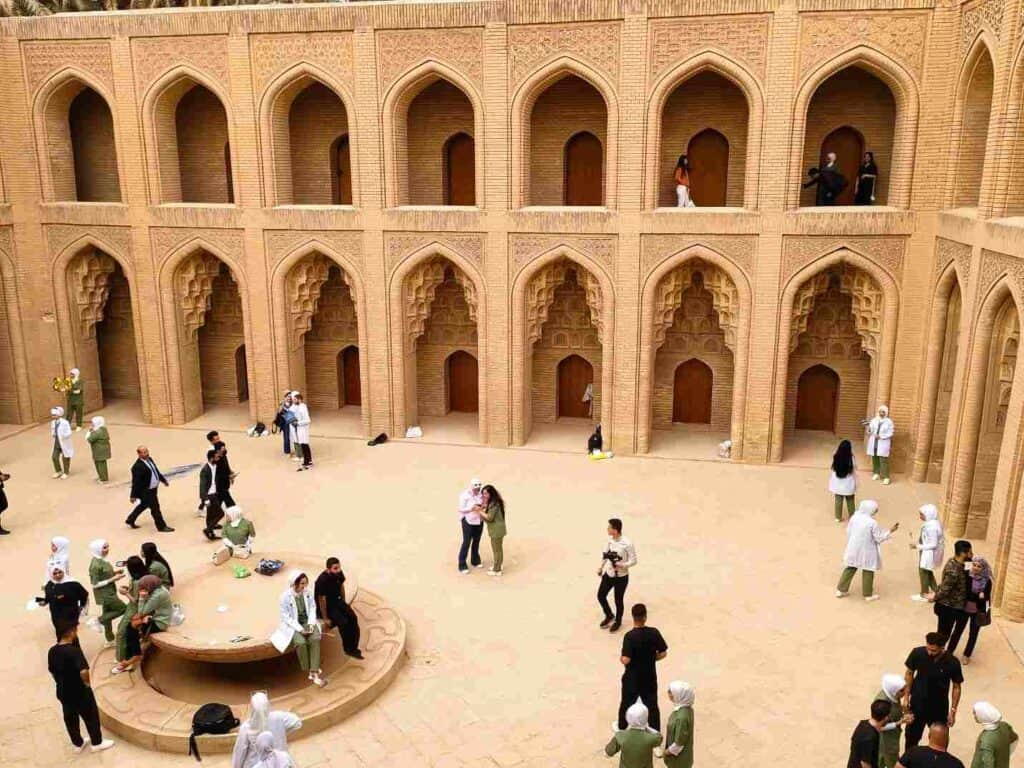
The pillared corridor encompassing the spacious courtyard with rooms on two floors, the fine examples of muqarnas, and a large iwan are the main features of the Abbasid Palace.
The main entrance, similar to that of Al-Mustansiriya, faces the Tigris River.
Opening hours: 9 am – 1 pm
Entrance fee: 25 000 IQD
10. Haydar Khana mosque
Built by Daud pasha in 1826, the mosque along the Al- Rashid street dates back to the Turkish period. A praying hall opens from the vast courtyard. A dome covered with blue tiles with floral motifs that is absolutely Persian style tops it. The mosque previously had an adjacent theological school and a remarkable library.
Opening hours: it is only open during praying time.
At the end of the Rashid street, you get to the Amin square, where the Ahmedija or Maidan mosque stands.
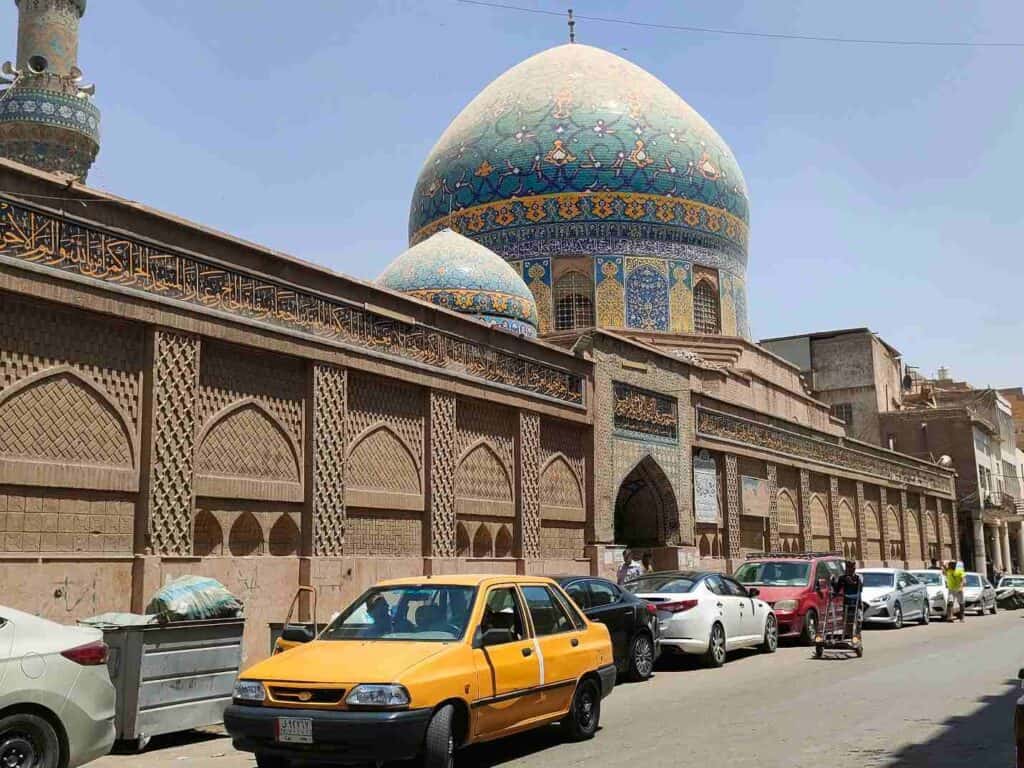
11. Have a drink and nargileh at the Umm Kulthum Café
One of the best things to do in Baghdad is to spend time in a café. These are great places to observe local people. The café along Rashid Street is dedicated to the Egyptian national icon, the singer, songwriter, and actress Umm Kulthum who performed from the 1920s till the 1970s. She was also called the “Star of the East” and is still widely honored for her achievement in the Middle East.
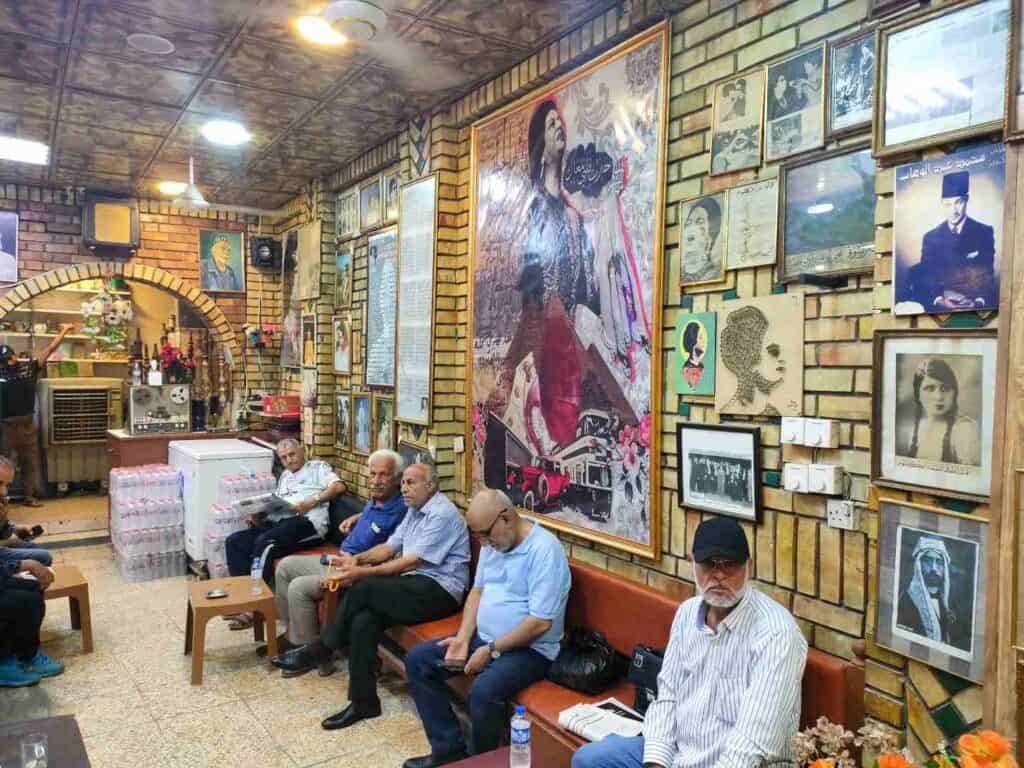
12. Khan al Mudallal antique market
At the end of Rashid street, you find this pleasant courtyard surrounded by several antique shops. If you are into that, you will love this place. Some of them possess really precious historical stuff.
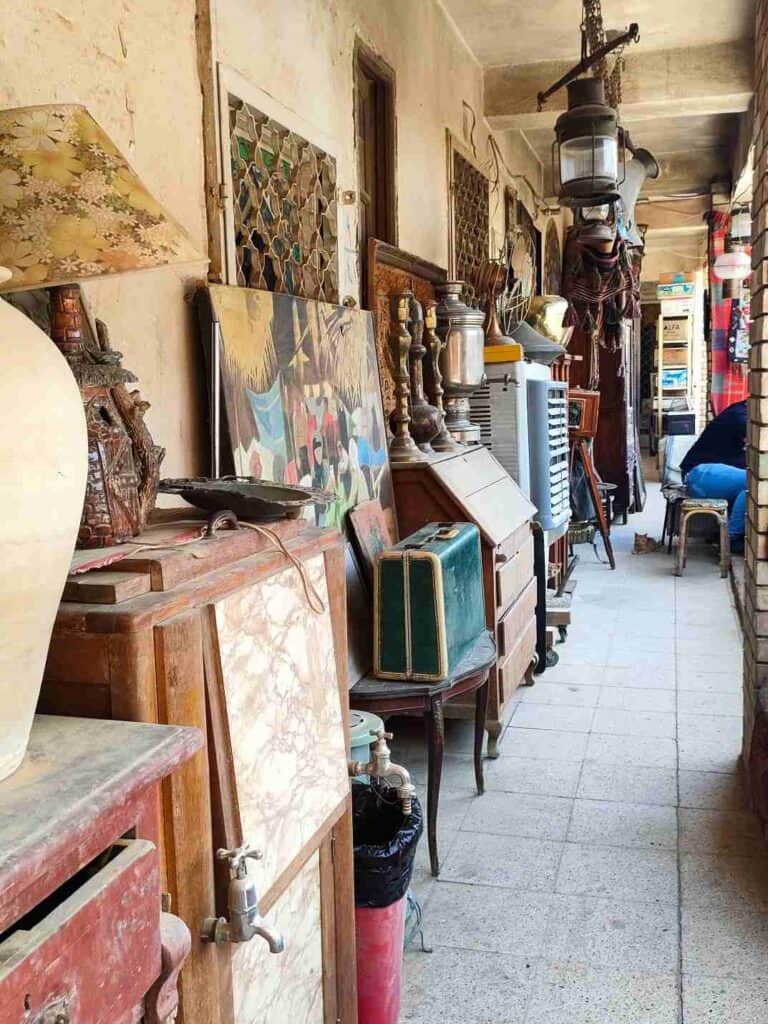
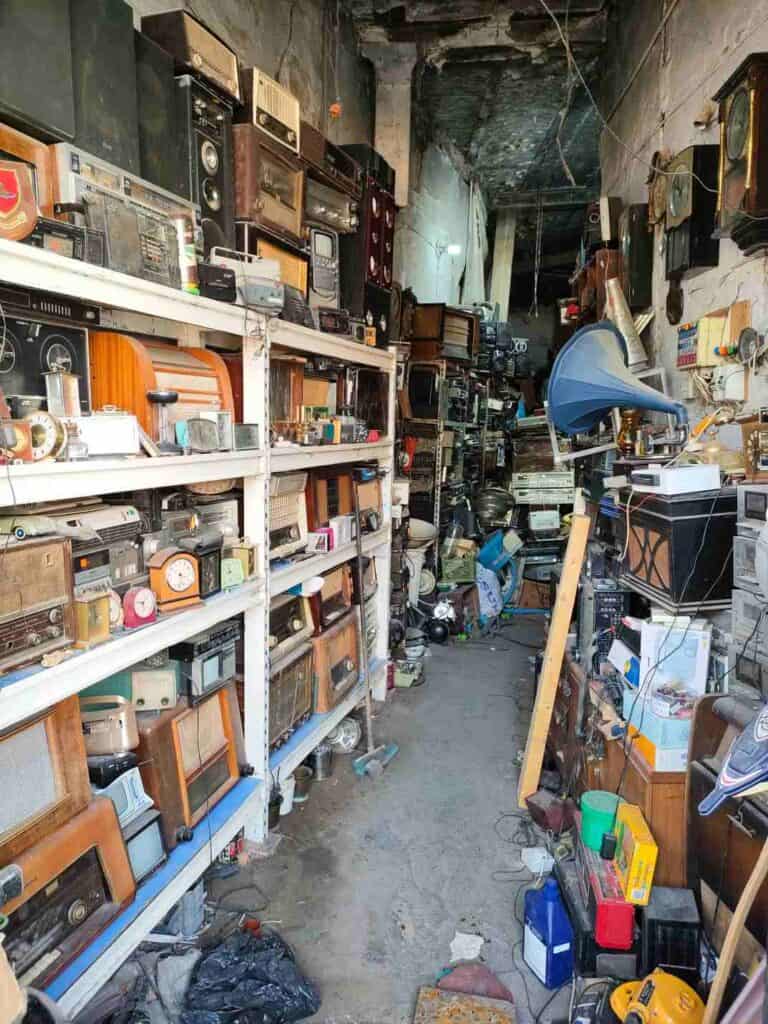
13. Jami’ al-Ahmadiyya (Maidan mosque)
Ahmed Pasha founded it in the 18th century. The one bigger and the two smaller domes are covered with colorful tiles. The wall of the mosque is painted with inscriptions of the Qur’anic verses, written by the calligrapher Sufyan al-Wahbi in 1850, who is buried in the mosque yard. The mosque was restored in 2010 before holding the conference for the cabinet of Waqf al-Sunna.
Opening hours: often closed, only open during praying time
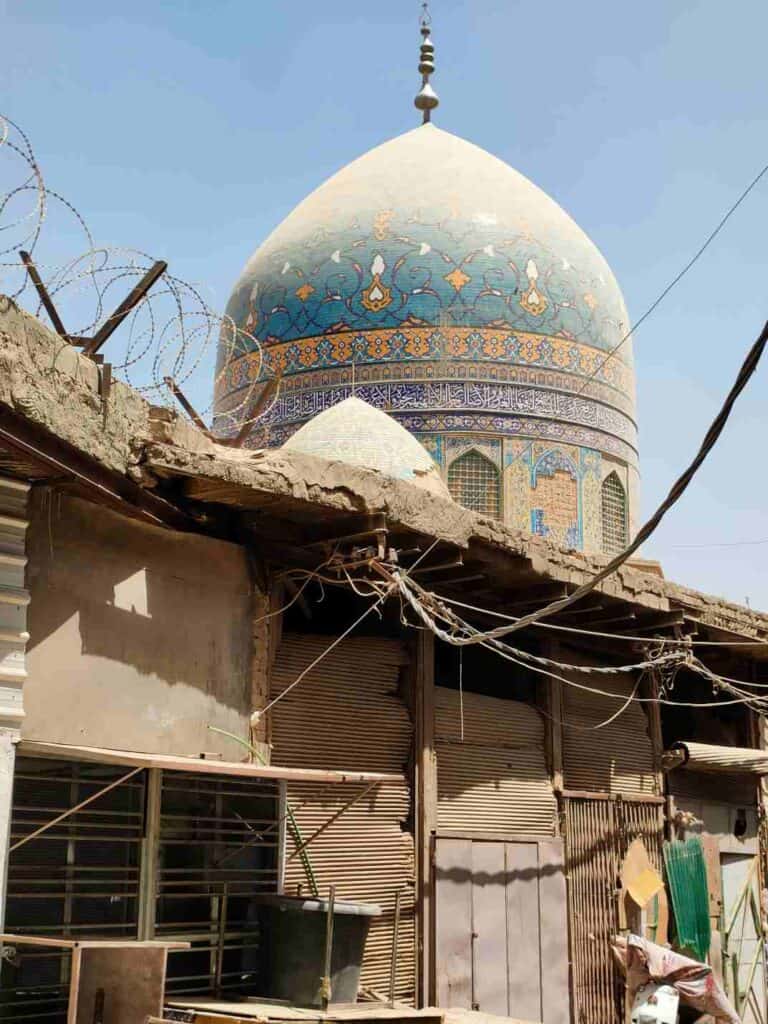
14. Boat ride on the Tigris River
At the end of Mutanabbi street, you find big and small boats to make a boat tour on the Tigris river.
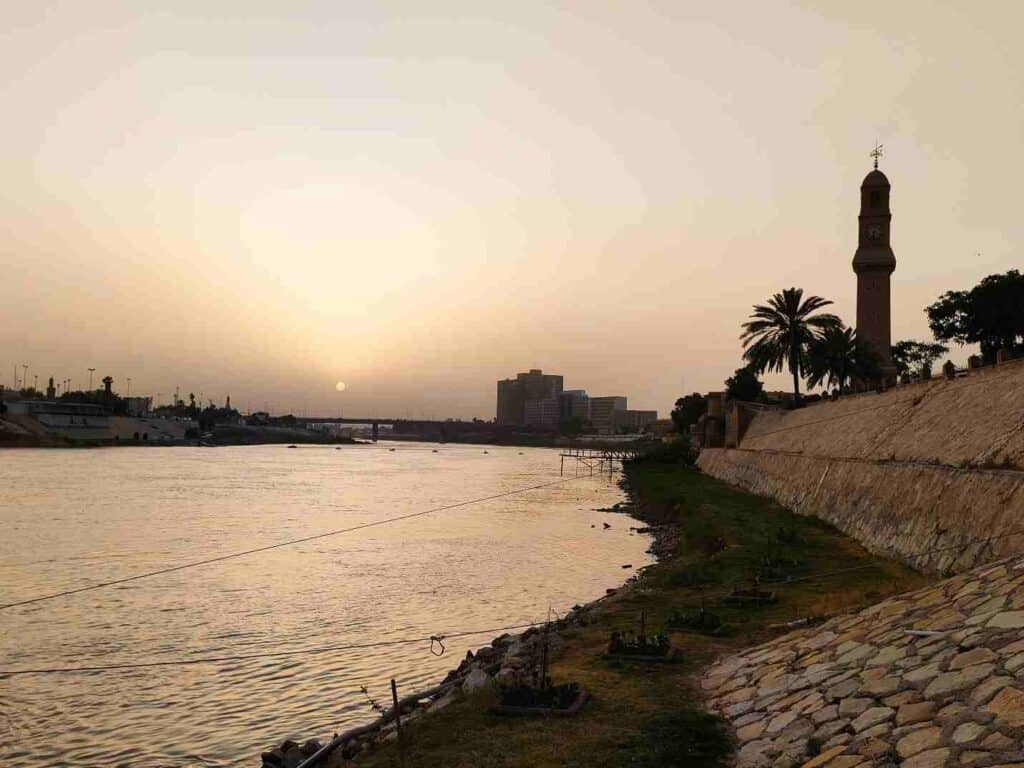
The big boat costs 3000 IQD and the small boat (departs with five passengers) 5000 IQD. The boat ride takes around 20 minutes, and although there are no big attractions on the way, it is nice to end your day on the famous Tigris river.
Finish your day by walking along Mutanabbi street in the evening and enjoy the ambiance.
DAY 3: Firdos Square – Abu Nawas – Church of Our Lady of Salvation – Tahrir square – Armenian Church Martyr’s monument – Sheikh Abdul- Qadir Gilani complex– Martyr’s square – Mausoleum of Sheikh Omar Suhrawardi- Bab al-Wastani
1. Firdos square with Ishtar Sheraton and Palestinian hotel
The big roundabout at Firdos Square stands empty now. Earlier, the monumental arch of the Unknown Soldier there occupied it from 1959 until it was replaced by the 12-meter-high statue of Saddam Hussein designed in 2002 for his 65th birthday.
The images of Iraqi citizens pulling down the statue with the help of American forces spread around the world. They attacked with hammers, decapitated the figure, and dragged it through the streets of Baghdad.
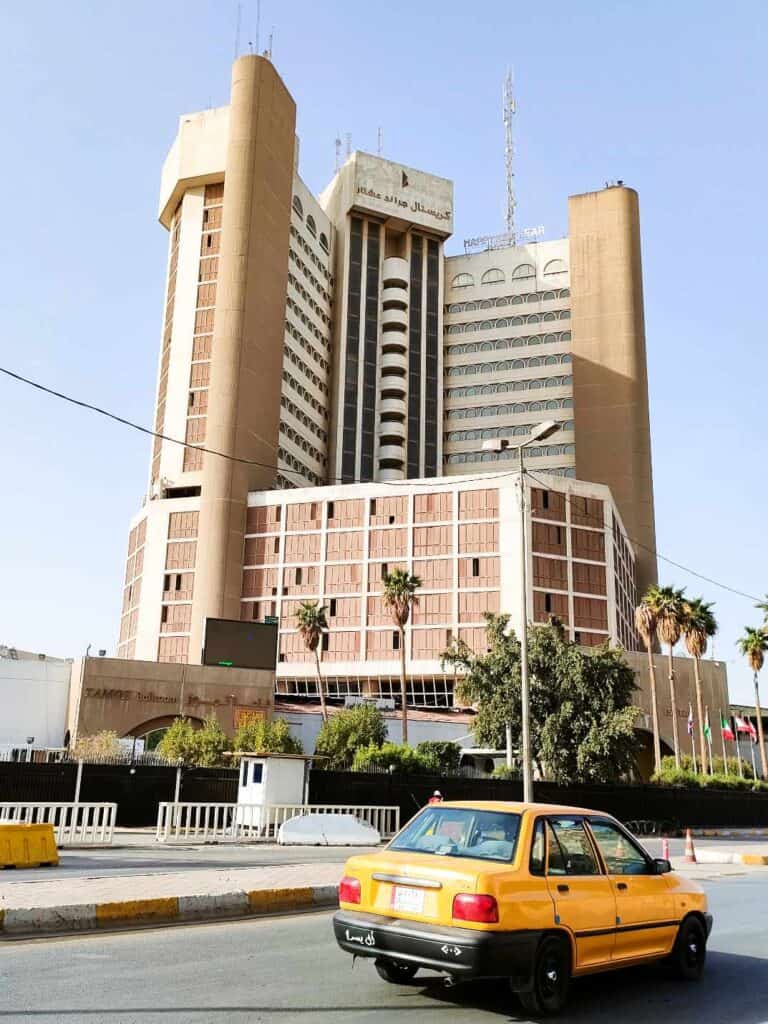
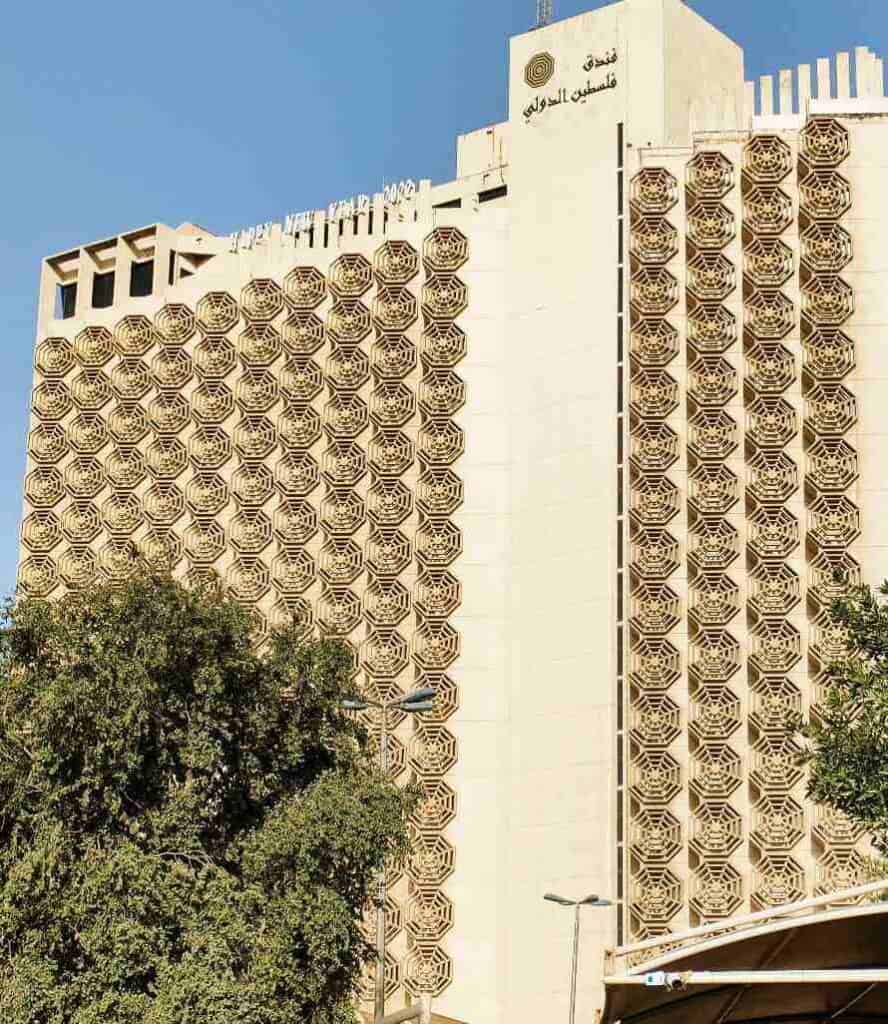
However, the globally televised footage that made headlines in all international newspapers got critics for exaggerating the number of Iraqis present.
They compared the toppling of Saddam’s statue with what happened during the revolution of my country, Hungary, in 1956, when the statue of Stalin was also decapitated and torn down.
On the left side stands the 99-meter-tall iconic Ishtar hotel (formerly called Ishtar Sheraton hotel) next to the 14th of Ramadan Mosque. On the right-hand side towers the massive Palestine hotel, built-in 1982 by the Iraqi government. Since it was managed earlier by the Le Meridien hotel chain, it was called the Palestine Meridien Hotel. However, after the Gulf war, due to international sanctions, the Meridien withdrew, and the hotel’s name changed to the Palestine hotel.
Both hotels, plus the Rasheed hotel located in the “Green Zone”, were known to be the headquarters of international journalists who reported about the Gulf wars. In a controversial accident in 2003, during the American invasion of Baghdad, the American tanks fired a shell on the Palestine hotel killing two journalists, raising the question of whether it could have been avoided.
2. Abu Nawas road
When driving around Baghdad, you will end up several times on the Abu Nawas road that runs parallel with Sa’dun street on the riverbank. Once, it was a well-known landmark of Baghdad, an attractive boulevard with villas and the center of entertainment during the monarchy and after 1958 as well. Cafes and swimming clubs were the center of entertainment and were popular meeting places for couples. The famous road starts from Tahrir square as a continuation of Rasheed street and runs kilometers long along the Tigris river. On the other side of Tahrir Square, Jumhuriya street continues as Sa’doun street. Sadoun was Iraq’s prime minister in the 1920s and committed suicide in 1929 for political reasons.
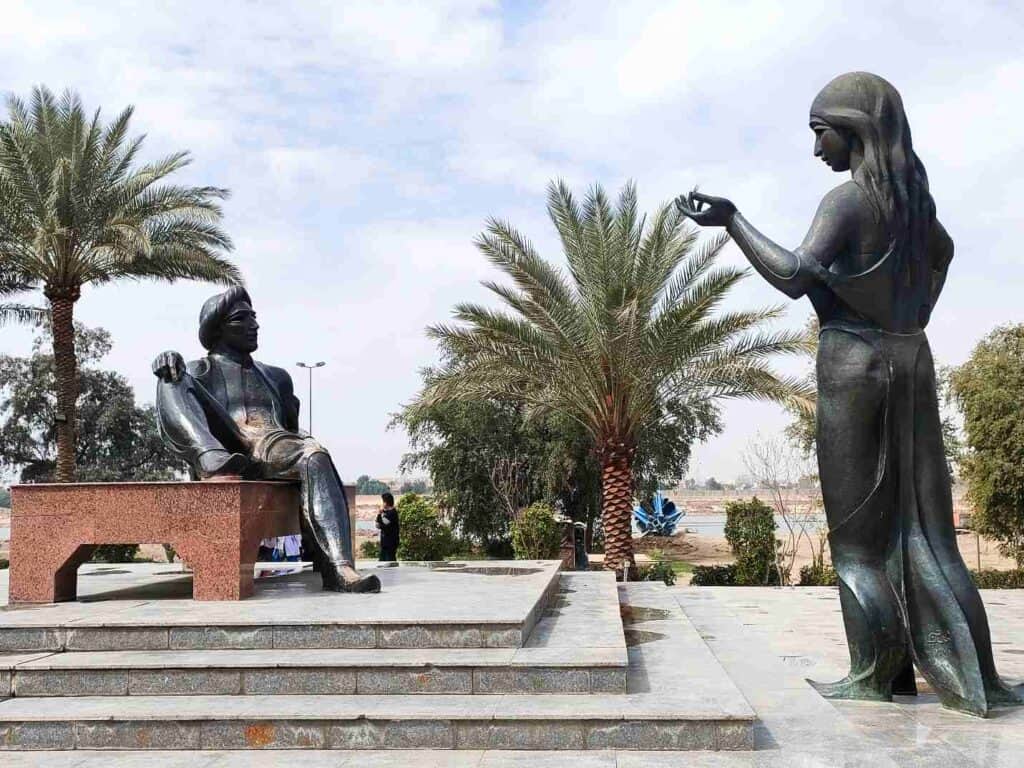
The Abu Nawas Park stretches two km along the Tigris river, where families have a picnic and stroll around.
Along Abu Nawas, you can see the statues of King Shahryar and Shahrazad from the tale of the Arabian Nights, which is a good spot to take photos.
3. Kahramana square with the Thousand one-night statue – photo
Along Sadoun street, there is another famous group of statues that is worth a photo. A woman pours water into a clay pot, the servant of Ali Baba, called Morjana.
4. The Church of Our Lady of Salvation (Sayidat al-Nejat)
It was the site of a horrible attack against Iraqi Christians. On 31st 2010, six suicide bombers from the terrorist group called the Islamic State in Iraq killed 58 worshippers during a Sunday mass. Before, the church held three masses in the morning and 2 in the evening. Now they only have 2. Next to the church is a memorial with a list of the victims of the attack.
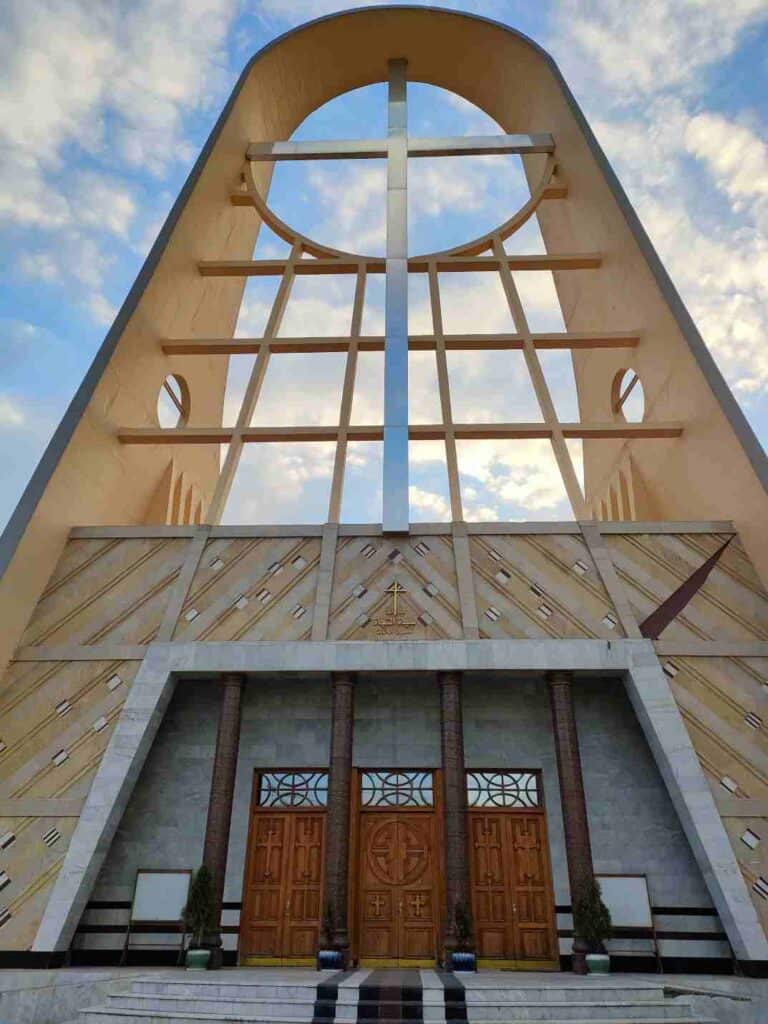
Before the pope’s visit in March 2021, they covered the wall surrounding the church with graffiti that spread the word of brotherhood, peace, and the respect of all religions.
Christians have lived in Iraq since the 1st century, and in 2003 there were one million living in Iraq. Many escaped being threatened and subjected to violence during the civil war.
5. Tahrir Square and Freedom Monument – one of the most famous monuments in Baghdad
It is at the intersection of al-Sadoun Street and the Jamhouriyya Bridge Road. In the center is the gate-shaped Freedom monument that commemorates the end of monarchy and the creation of a republic, with the Ummah public garden behind. The Assyrian and Babylonian reliefs decorating the memorial by the Iraqi sculptor Jawad Saleem and architect Rifat Chadirji recall the revolution of 1958 and Iraqi history and opened in 1961.
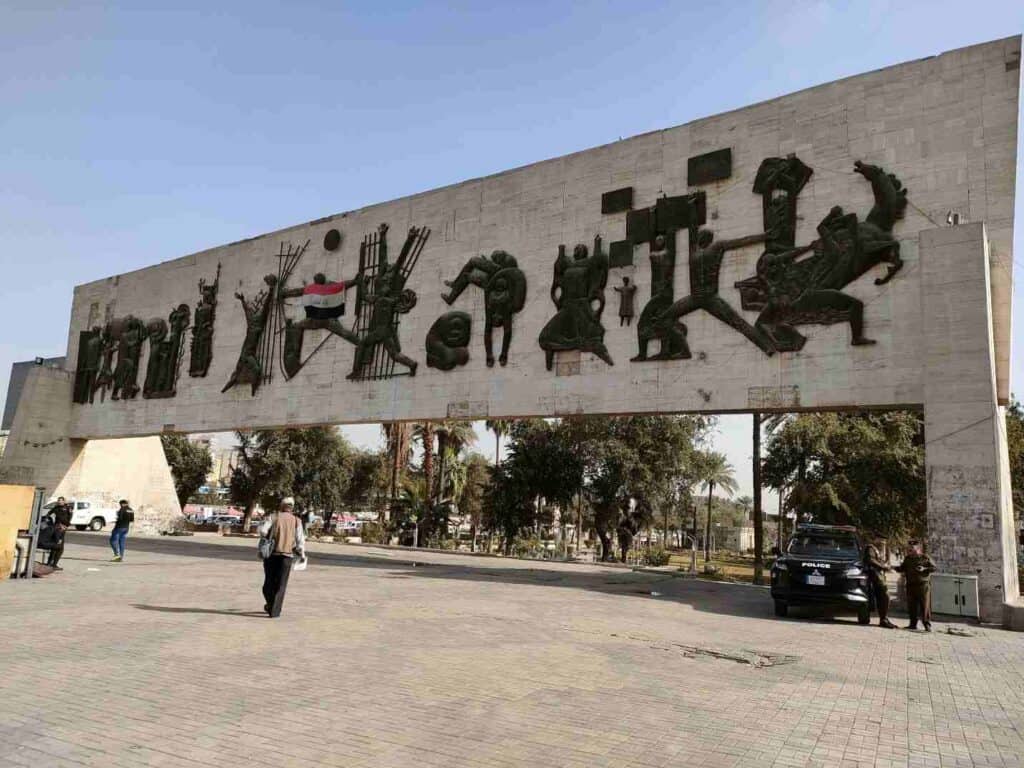
The Tahrir Tunnel next to the square is decorated with graffiti recalling the severe protests that swept over the country in 2019. You can walk between the two lines if you don’t mind cars passing by.
The square was the center of the massive protests started in October 2019 and lasted for two years.
Regardless of their religion, Iraqi people went to the street and protested against their government’s outraging corruption and unemployment. According to the so-called corruption perceptions index, Iraq is among the worst countries. The most common thing I still hear from the Iraqi people is that the government does not spend on improving infrastructure despite the immense oil resources.
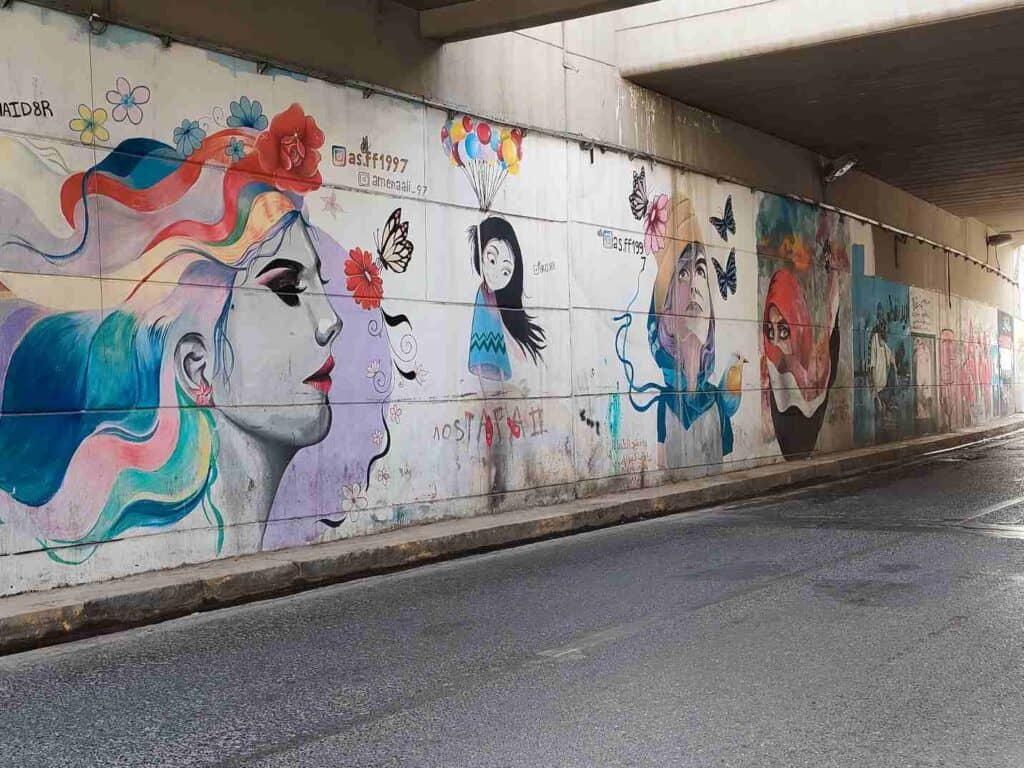
The protestors demanded the resignation of the government, who answered with violence and shot into the crowds, leading to the death of thousands of people across the country.
They demanded the end of the sectarian political system dominated by a Shia government installed by the United States after they invaded the country in the second Gulf war in 2003.
6. Armenian orthodox church
Close to Tahrir square, you can reach the Armenian Orthodox Church, one of the oldest Churches in Baghdad, built by the Armenians on the plot of land they received from the Ottoman Sultan in 1640.
On 15 August each year, a special ritual is held at the church to celebrate the Assumption of the Virgin Mary to heaven. Christians from all over Iraq come to attend the ceremony.
Opening hours: uncertain; when I was there, it was closed, and I could only have a look from outside.
7. Al Shaheed (Martyr’s monument) – one of Baghdad’s landmarks
Designed by Ismail Fattah al Turki and built by Mitsubishi in 1983 as a shrine to the hundreds of thousands of victims of the eight-year war with Iran (1980-1988). In Saddam’s time, there were glass cases full of belongings of the dead, including pens, nail clippers, letters home, glasses, and dog tags. Today, it has become a monument to all the martyrs.
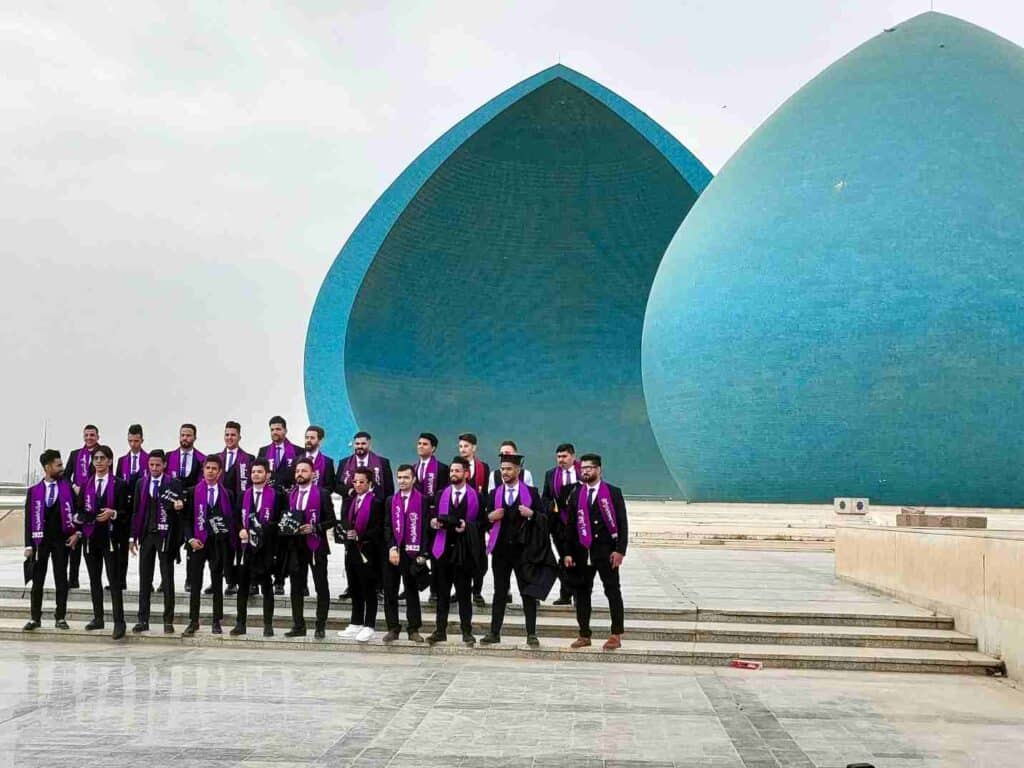
The 40-meter-tall turquoise dome is split into two halves with an eternal flame between them. The shape of the domes is in the style of the Abbasid era.
The monument is part of a complex with an artificial lake and walking ways.
As you walk around the memorial, the two half domes interestingly change their position to each other, sometimes being far while other times being in eclipse.
8. Sheikh Abdul- Qadir Gilani mosque and mausoleum
The Islamic complex (mosque, mausoleum, library) is dedicated to Abdul Qadir Gilani, who founded the Qadiriyya Sufi order, one of the world’s most widely spread Sufi orders. As his reputation grew, he became respected throughout the Islamic world, and many miracles were attributed to him. Pilgrims of the same sect from other continents travel to Baghdad to visit his shrine.
It used to be a religious school where Gilani, the descendant of Ali, came to teach. After he died in 1166, he was buried in the school later used as a mosque.
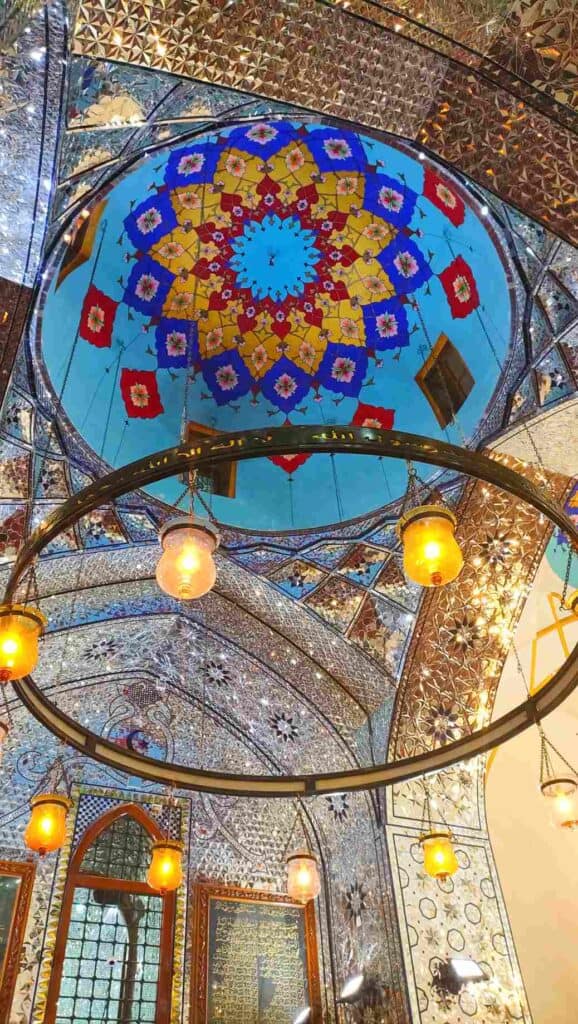
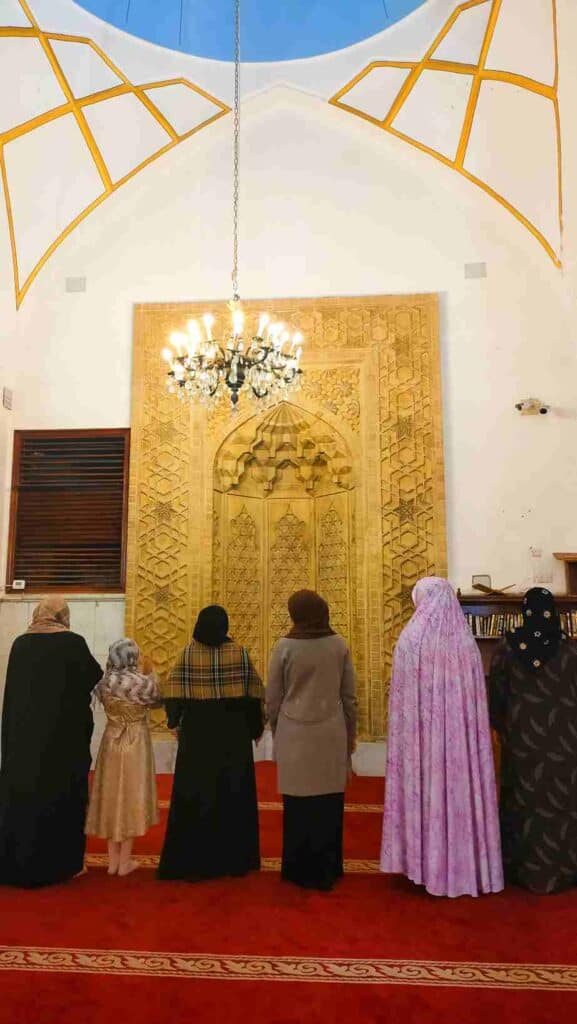
The first prime minister of Iraq, Abdul Rahman Al Naqeeb, ordered the building of the 30-meter high minaret, one of the main features of the complex. The mosque was a target of a car bomb in 2007 that killed 24 people, causing severe damage to the shrine.
Like most mosques, it looks amazing when illuminated at night.
9. Mausoleum of Sheikh Omar Suhrawardi
The sheikh was a renowned Sufi scholar of his time in the Islamic world who died in 1234. Locals highly respect the founder of the Suhrawardiyya Sufi Order, but for a traveler, the adjoining cemetery is much more interesting. A conical dome built in Seljuq architectural style tops the shrine. Due to its slight tilt, some say it is in danger of collapsing.
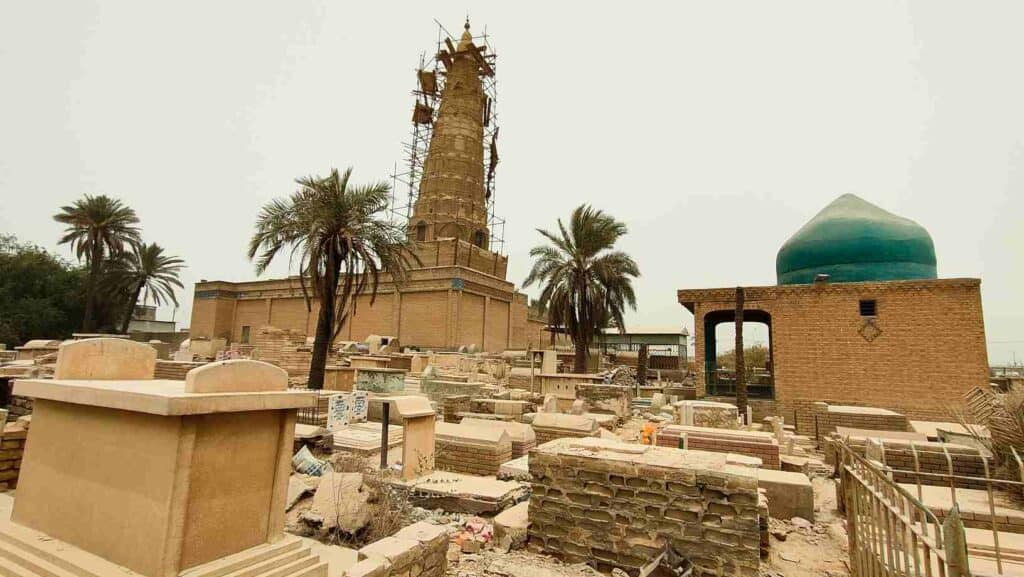
10. Bab al-Vastani
It is the only surviving of the previous four medieval gates in Baghdad, opposite the Al-Sahrawardi Mosque and Shrine. The impressive gate is amid an ancient cemetery. A fence surrounds it on the most side, and it seems to be inaccessible. But once I got inside, I realized there was the main entrance to it.
Be careful, because the official wants to collect 20$ for photography, which is not worth paying it.
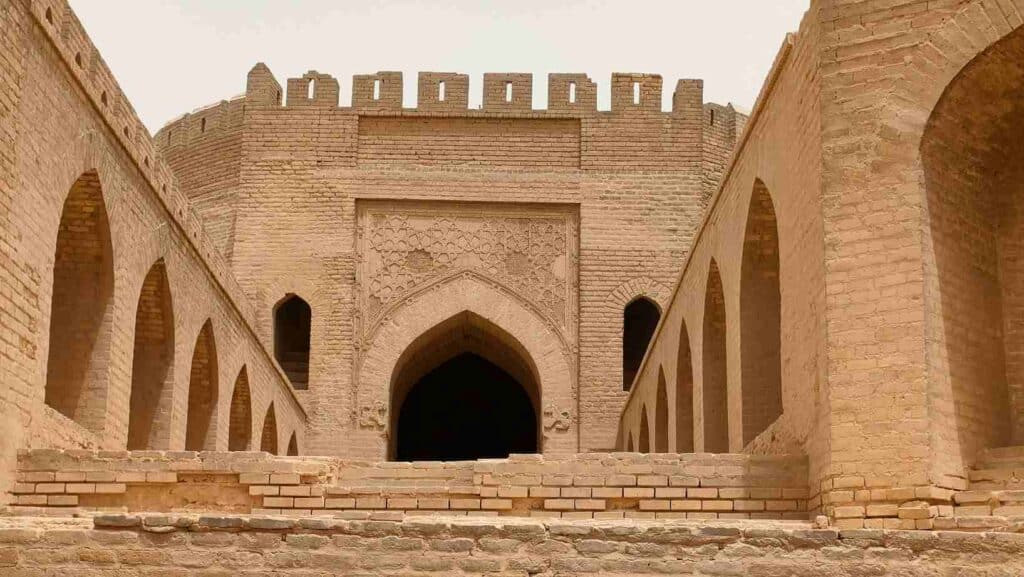
DAY 4: Al Amiriya shelter – Umm al qura – Abu Hanifa mosque – Kadhminiya
1. Al-Amariya shelter monument
An aerial bombing attack killed around 400 civilians on 13 February 1991 during the Persian Gulf War who were using the place as an air-raid shelter. The shelter was converted into a memorial.
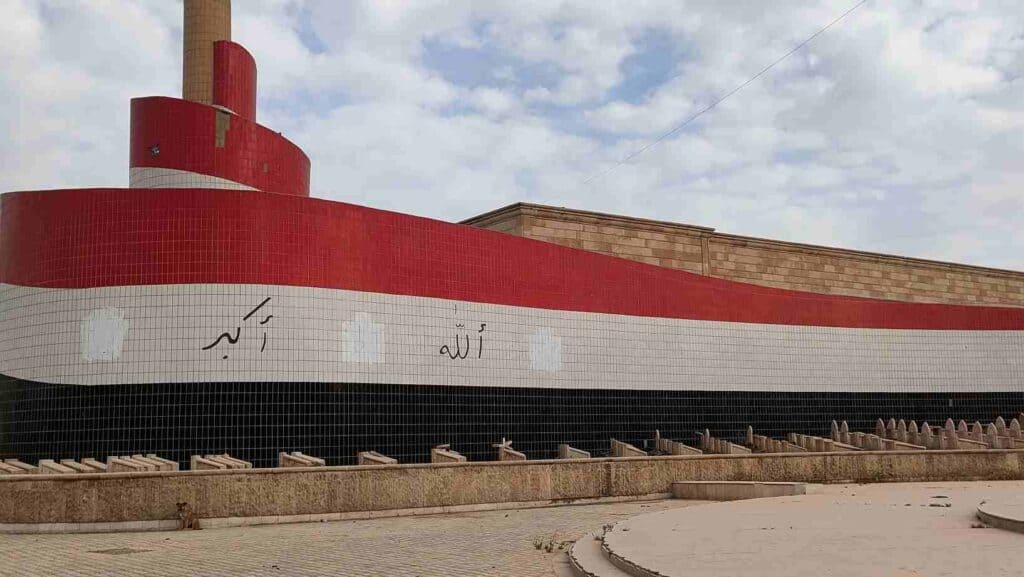
Visiting the Al-Amariya shelter is not on the list of most travelers. However, Iraqi people all know about the tragic event and keep it in their memory. The guard at the entrance gave us a torch to navigate with that in the darkness of the shelter that has been left intact since then with the bomb landing in the shelter. Photos of the victims are all over the wall.
Entrance fee: free of cost
Location: Al-Amiriya district
2. Umm Al-Qura Mosque (only with permit)
The mosque in the Al-Adel district of Baghdad is not a simple praying place, but some say it was intended to be the burial place of Saddam Hussein. His signature and thumbprint appear on a marble stone placed in the fountain. They started the construction on Saddam’s 61st birthday on 28th April 1998. Several of its elements are symbolic references to the “victory” of the Gulf war. For example, the outer minarets are 43 meters high, referring to the length of the US invasion in 1991. The other four minarets of 37 meters recall the date of birth of Saddam in 1937. With some imagination, you can recognize that the shape of minarets resembles Kalashnikovs and scud rockets.
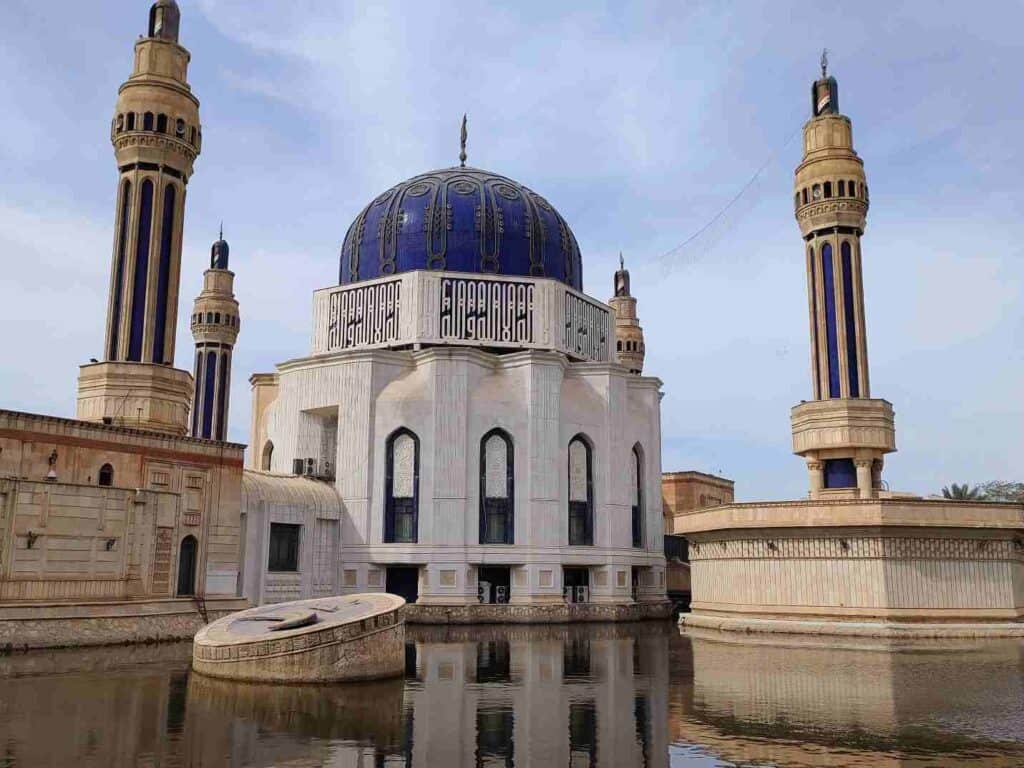
A sample of the Quran, written with Saddam’s blood mixed with ink and preservatives, was also displayed earlier in the mosque. In two years, the president donated twenty-eight liters of blood in order to write the book.
The pool, built in the shape of the Arab world, surrounding the mosque complex, gives a pleasant atmosphere. It is only open for Friday prayers and has very few foreign visitors. Also, because special permit is needed to enter Umm Al-Qura, the mosque of the “Mother of all cities”, formerly called Umm al-Maarik, “Mother of all battles”.
On 28th August 2011, the mosque was attacked by a suicide bomber killing at least 28 prayers.
There is a surprisingly great Islamic Museum next to the mosque, where I was honored to be the first visitor. I got a private guided tour about the life of Prophet Mohammad, the development of the most famous and holiest mosques, and the history of Islam. This museum and the explanation gave a clear overview of all a foreigner needs to know about Islam. We finished the tour with photos and left my appreciating comments in the visitor’s book.
Important: you need to have a local contact who can arrange a permit to enter the mosque.
Opening hours: officially only open on Friday, but with a permit you can get access any day.
2. Abu Hanifa or Al-Imam Al-Adham Mosque
Located Al Adhamiya district, the Abu Hanifa mosque is a famous pilgrimage site for Sunni Muslims. It accommodates the tomb of Abu Hanifa, the founder of the Hanafi Islamic religious school of law, who died in 767. He was also a talented architect, and he led the construction of Mansur Khalifa’s round-shaped city. After his death, they named the area around his mausoleum Adhamiya. It is one of the most beautiful mosques in Baghdad.
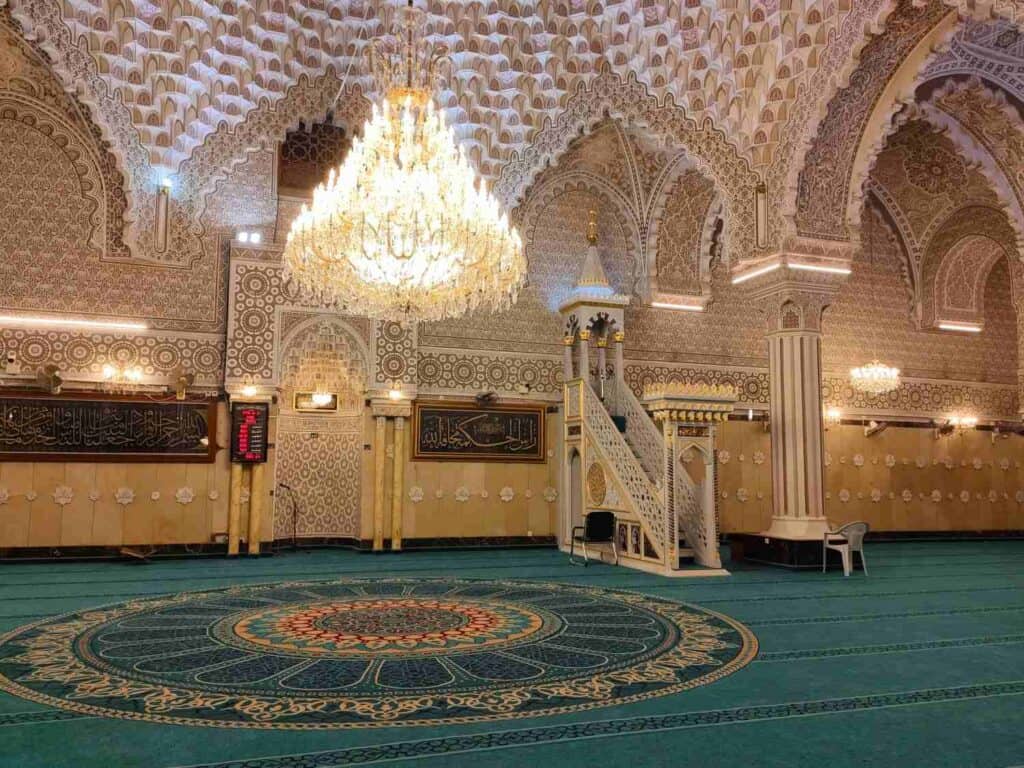
Important: women need to wear an abaya to enter the mosque. You can easily bu one in one of the shops opposite the mosque
3. Al Kadhimiya mosque – one of the most famous places to visit in Baghdad
Located in a farther district, you need a couple of hours to get there and visit the Al Kadhimiya Mosque. This is one of the oldest towns in Baghdad, with one of the most important Shia pilgrimage sites, a complex of a mosque and a mausoleum. It is the burial place of the 7th and 9th Imams of the altogether 12 Imams, Musa Al-Kazim and his grandson Muhammad Al-Jawad. When the Abbasid Caliph Jafar al-Mansour constructed the circular city of Baghdad in 762, he also created the Quraish cemetery as a burial place for his family. Later, the two holy imams were also buried here. Al-Kadhimiya town was built around the cemetery.
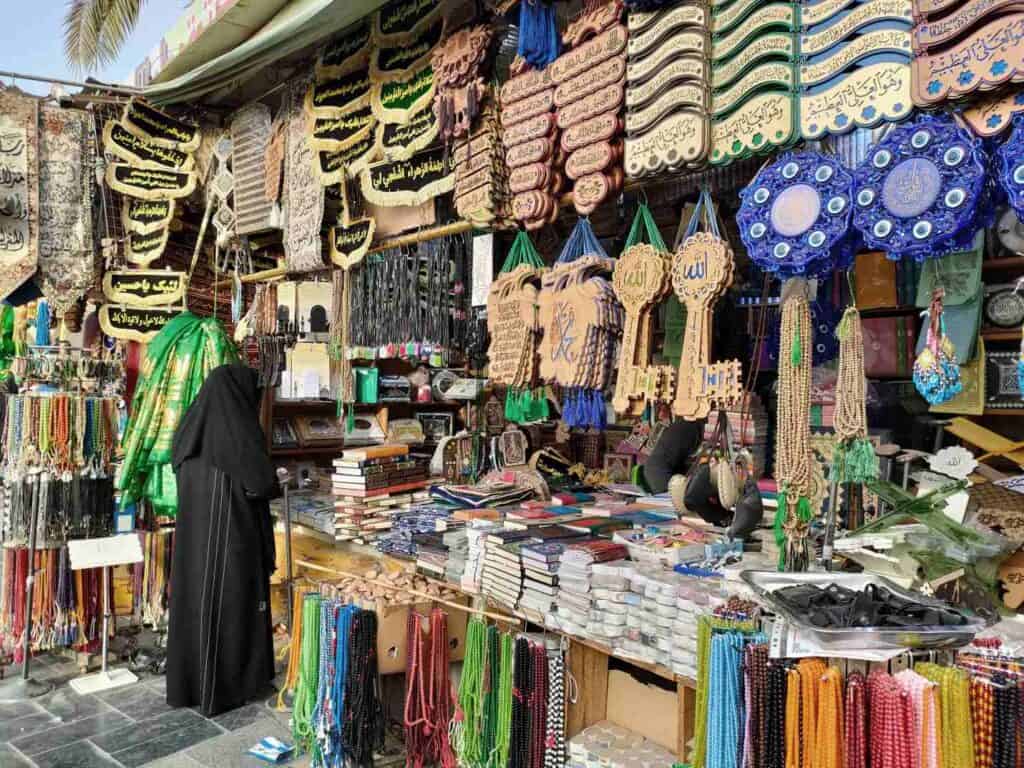
The shrines became continually more and more beautiful. They built domes of the teak tree. Later, they were covered with colored tiles, and later, it was covered with gold. Two respected scholars, Shaykh al Mufid and Shaykh Nasir al-Din Al-Tusi are also buried in the mosque.
It is worth taking the time to stroll around the souk that is always busy. Shops sell everything from religious artifacts to kitchen utensils. The gilded central dome and the four minarets coated in gold are seen from far.
Important: Women can only enter wearing an abaya. You have to deposit your bag in the locker, but you can take your mobile.
Where to sleep in Baghdad?
There are no hostels in Baghdad, and cheap (15-20 000 IQD) accommodation is usually dirty. As a low-budget traveler, your best option is Royal Garden and Hotel Diwan where a single room costs approximately 35 000 IQD. These are not registered on booking.com.
You can also search for accommodation in Baghdad on booking.com.
The best cafés in Baghdad
1. Al Atrakchi café
The Al Atrakchi café and heritage building is located in Baghdad’s upscale Al Jadriya district close to the University of Baghdad but along a dusty main road. The thirst generation of auctioneers opened it in 2013 to exhibit the antiquities as a reminder of the rich Baghdadi and Arab heritage. A private library was also opened to encourage young Iraqis to revive their love for literature in Baghdad, once the educational center of the Arab world.
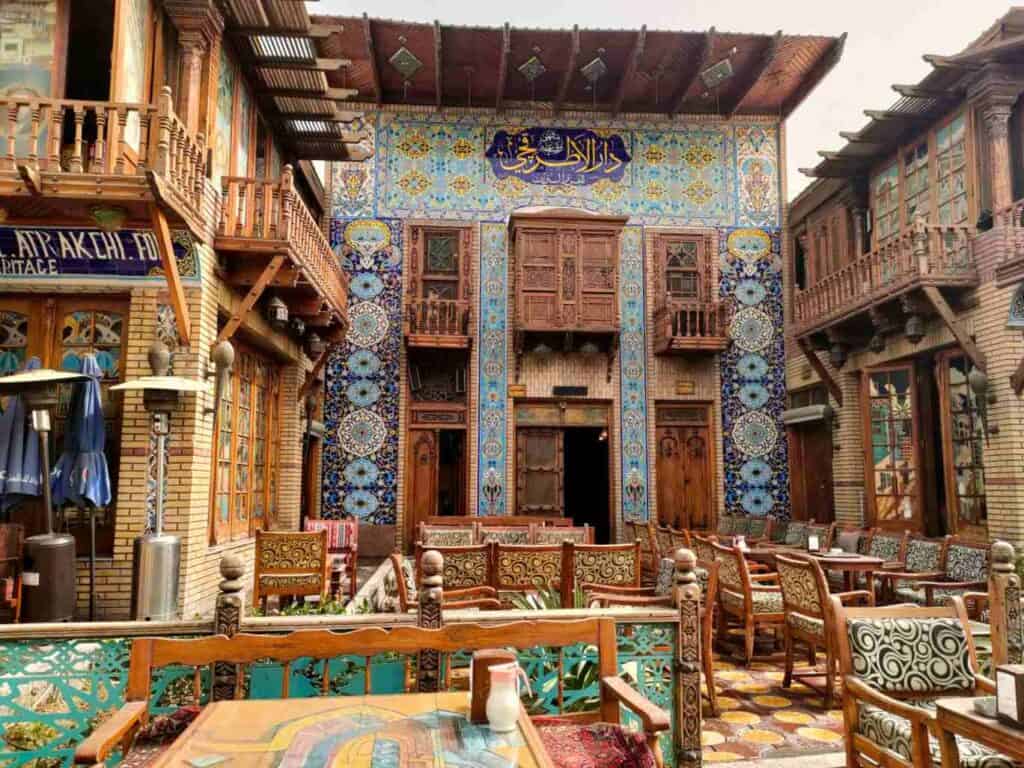
The colorful windows, nicely embroidered cushions, and flower-patterned colorful tile decoration create a fabulous atmosphere.
2. Shabandar Café
You cannot miss it when you walk along Al Mutanabbi street. This is one of the capital’s biggest attractions, so you definitely meet other foreigners here. It was a well-known intellectual hub on the book street, where the owner banned playing cards and dominos decades ago. It is a sort of gallery with old photos hanging on the wall. The café was also heavily damaged during the explosion in 2007.
3. Umm Kulthum Café
The café along the Rashid Street is dedicated to the Egyptian national icon, the singer, songwriter, and actress Umm Kulthum who performed from the 1920s till the 1970s. She was also called the “Star of the East” and is still widely honored for her achievement in the Middle East.
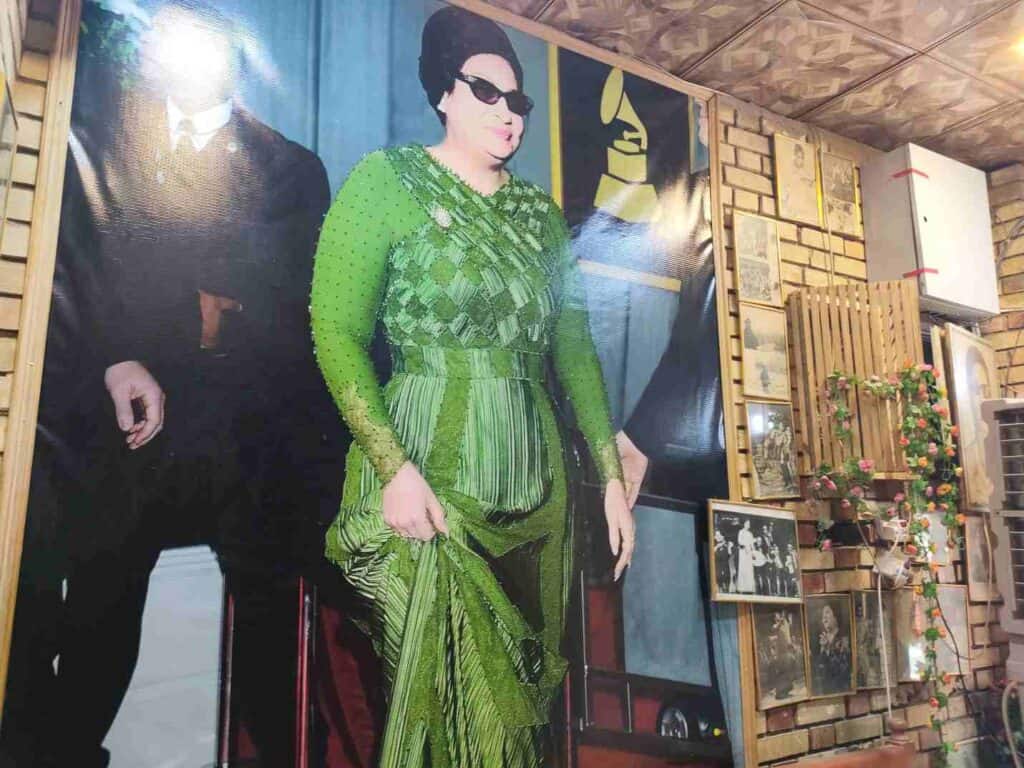
4. Ridha Alwan Café 1970
Located on Karrada street, the pleasant café has a wide choice of bakeries, and the wall is decorated with photos of famous Iraqi people.
Location: Karade Dakhil, Baghdad, Iraq
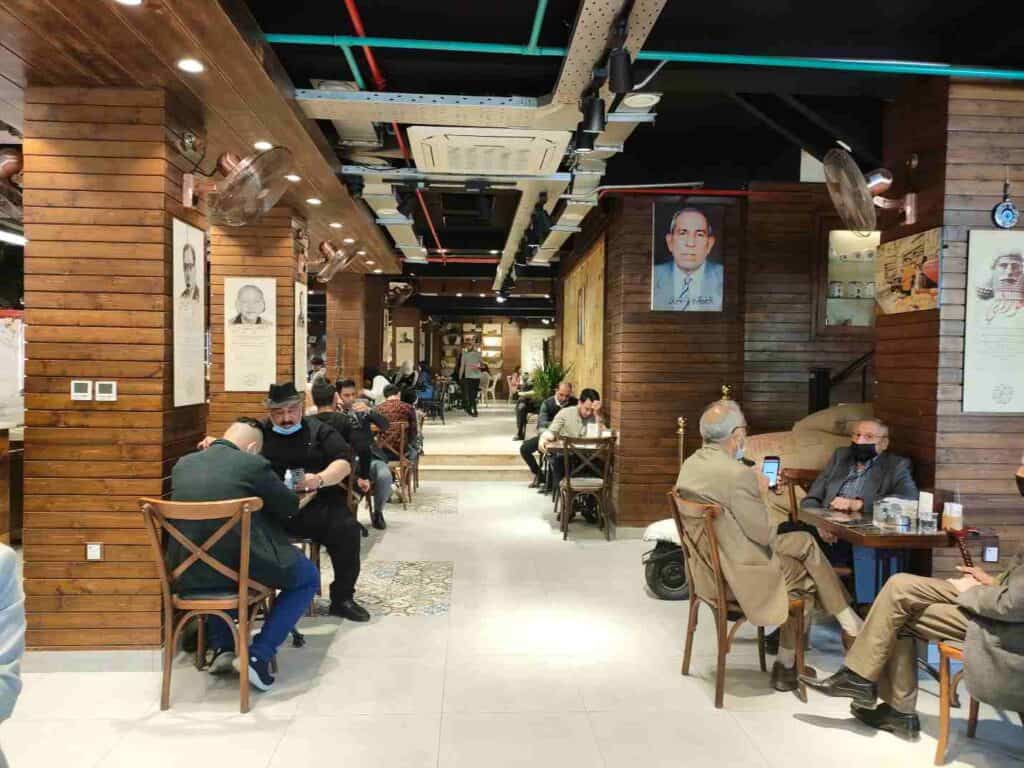
5. گهوة وكتاب (no English name)
This café is combined with a library and a balcony opening to Karrada street.
6. Tetnchi Café مقهى التتنجي
The best restaurants in Baghdad
1. Beiruti restaurant and café
Located on the Tigris river, this is one of the best and most relaxing places to try Mezgouf and kebab, have a coffee and shisha. I loved it!
Location: Al Beiruty Cafe, 89WC+62H, Haifa St, Baghdad, Iraq
Open: 24 hours
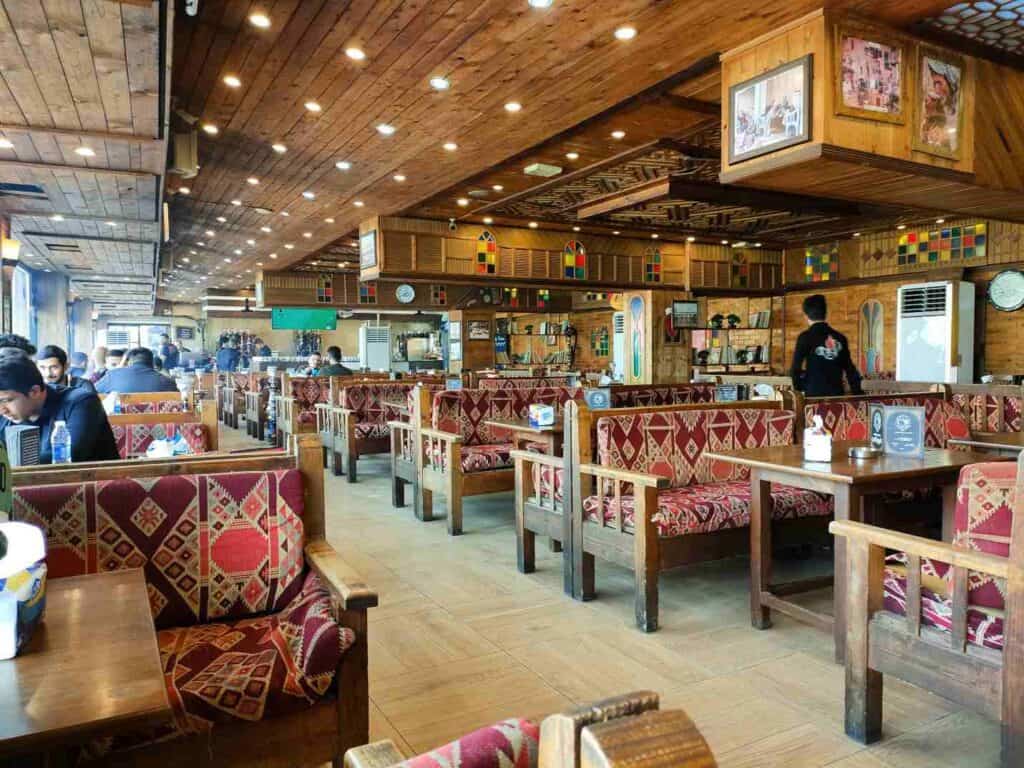
2. Sabah al-Arabi Restaurant
Location: 8C2M+V4J, Baghdad, Iraq
Open: 6 pm- 6 am
3. مطعم أغصان الزيتون (Olive Branches and restaurant garden), in Jadriya
Location: 33.2792679,44.3642404
Opening hours: 1 pm – 12 am
4. Samad restaurant in Mansour district
Opening hours: 12 pm – 1 am
5. Kebab Haji Hussein restaurant
Location: 88FW+VCP, Baghdad, Iraq
Opening hours: 9am – 12 pm
6. Al-Faisaliya Restaurant & Cafe
The restaurant and café has a modern design, and the first time I saw that the nargileh of melon taste comes with a real melon on top which burns the tobacco.
The best place to have breakfast in Baghdad
مطعم كاهي وگيمر (Kahi and Gamer Rasoul restaurant in English but you only find the location after the Arabic name)
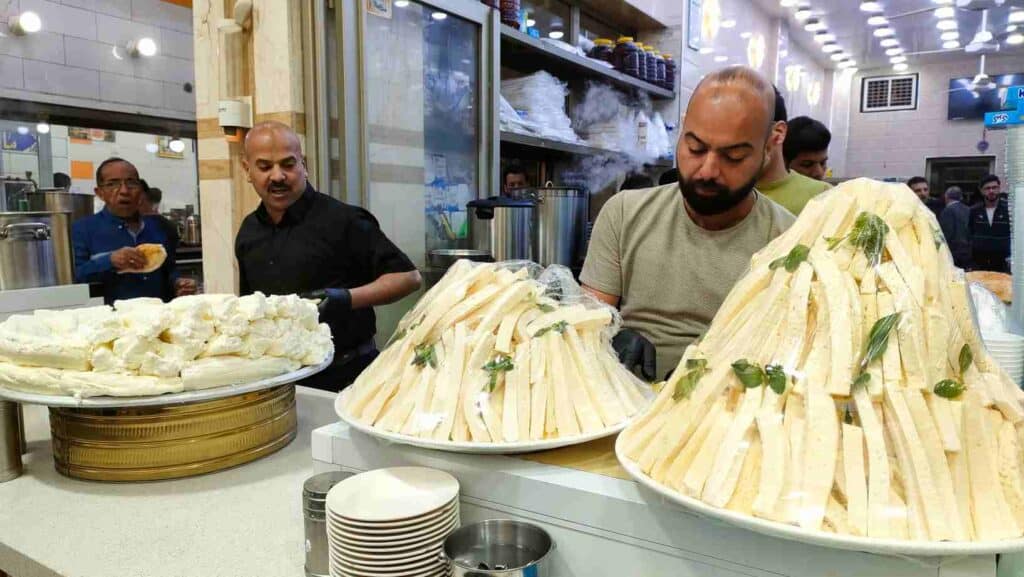
The best bars in Baghdad
- There are several bars to choose from on Abu Nawas, one of the best is Taco
- D Lounge & Restaurant-دي لونج بغداد in Jadriyah
If you travel around Iraq, you will probably end up more times in Baghdad, having a central location. It is worth making a good plan to visit Baghdad because of the distances, the traffic jams, and the restricted opening hours of the attractions. Still, there can be unexpected events and sandstorms that can make you change your plan. Traveling in Iraq as a whole requires flexibility. I hope the above information was useful to you and will help you make the most of your stay in Baghdad.
Other articles about Iraq
The best books to read about Iraq
All you need to know before traveling to Iraq
Other articles about the Middle East
What you can and cannot do in Iran
The best 2-week itinerary in Iran
All you need to know about the Iranian currency
The best places to visit in Tehran (museums, palaces, religious sites)
The best things to do in Tehran
The ultimate guide to spend 2-3 days in Beirut
The best places to visit in Lebanon in 10 days
Travel to Lebanon during the economic crisis
Alternative local tour in Beirut

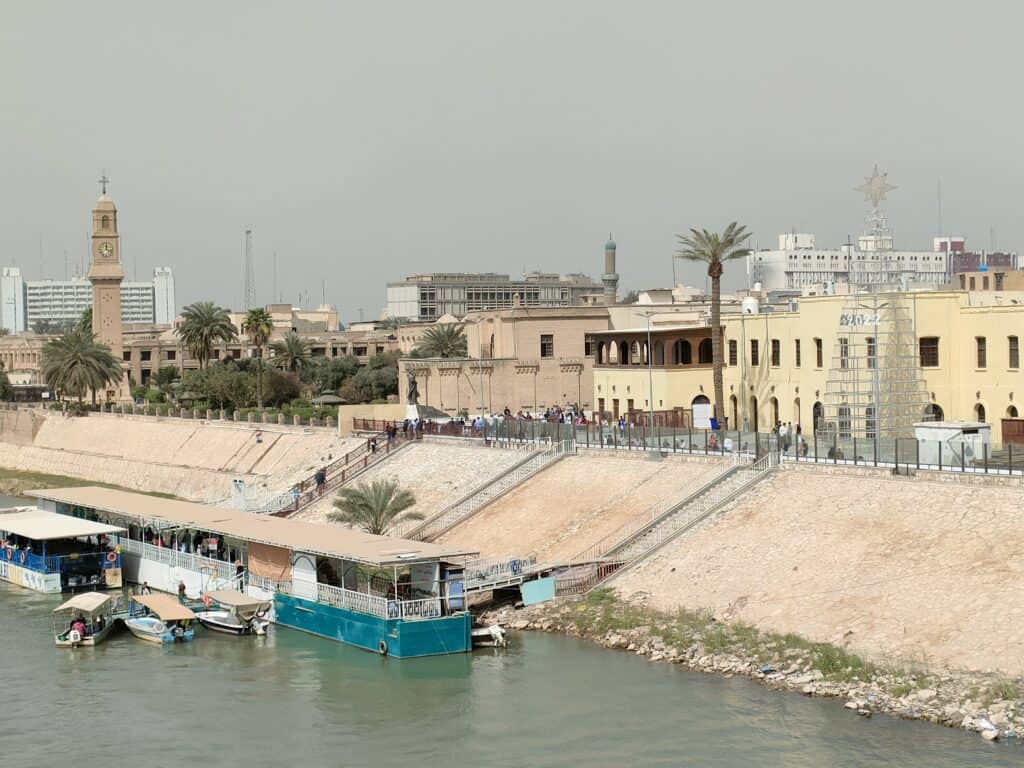


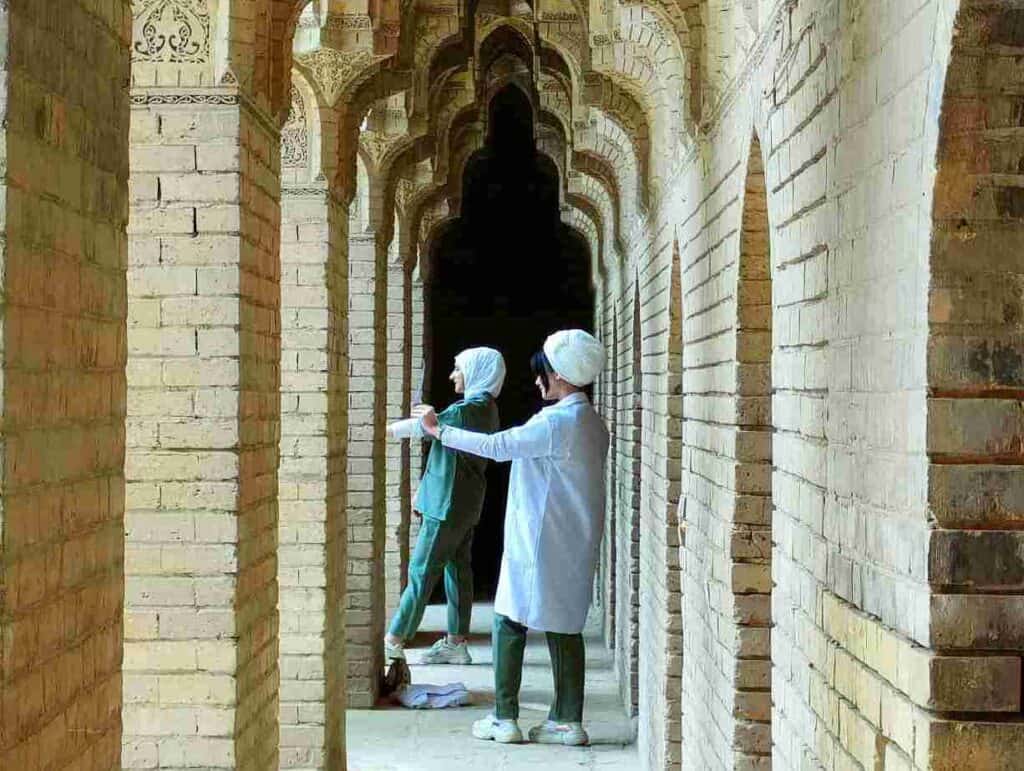
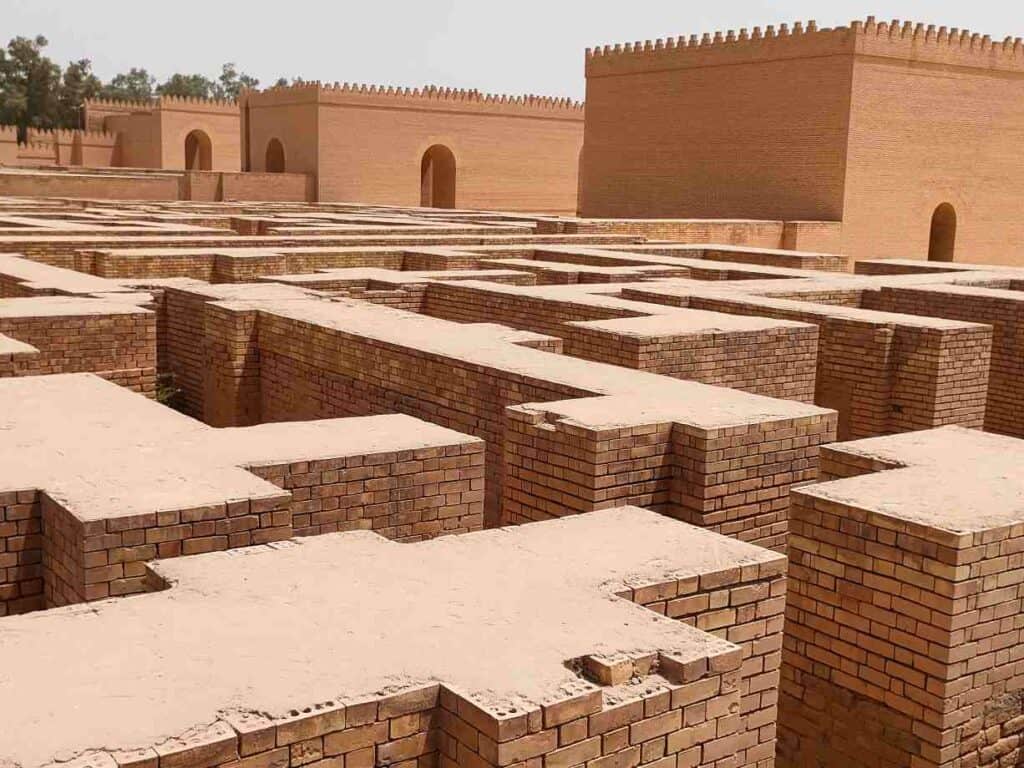
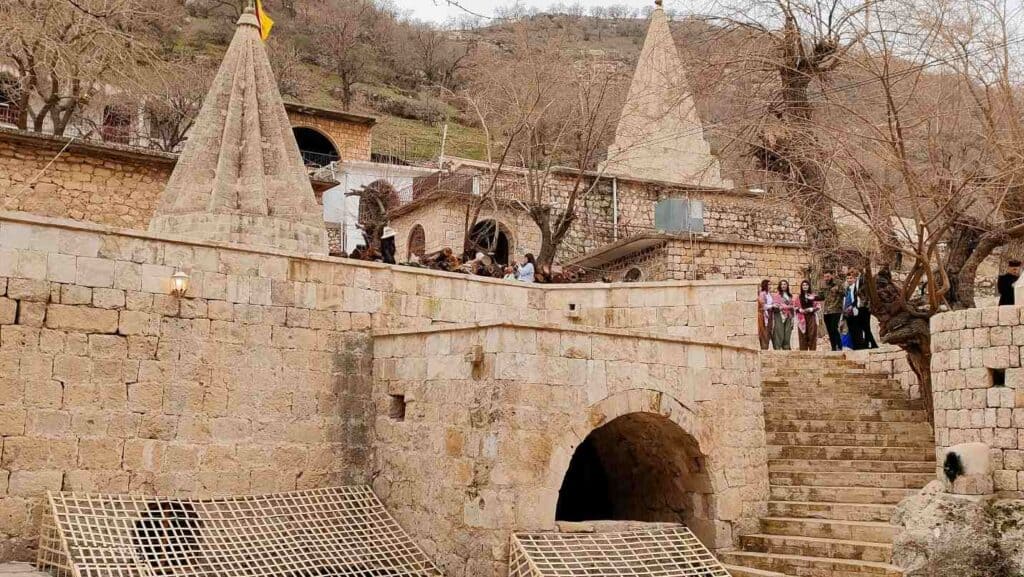
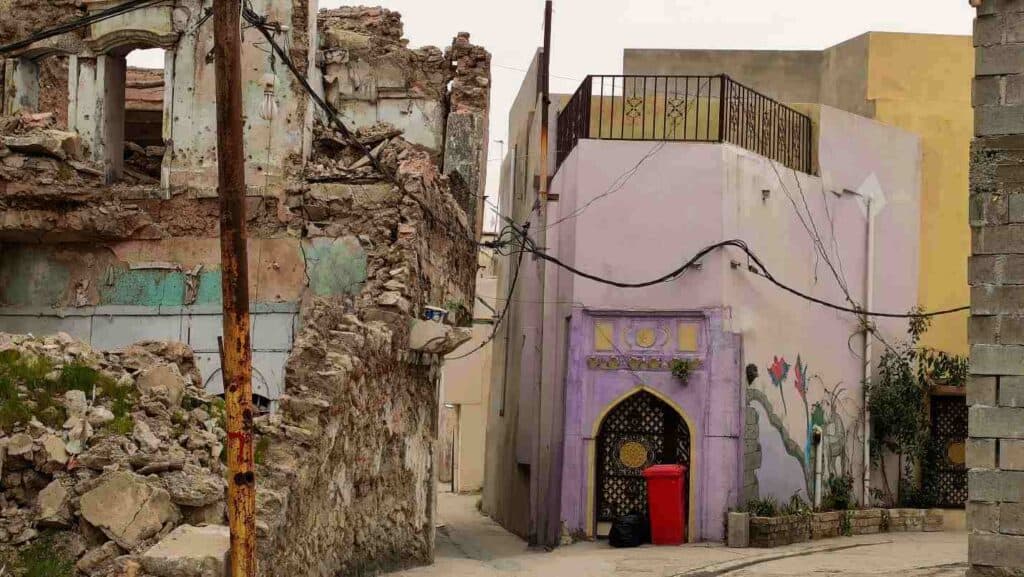
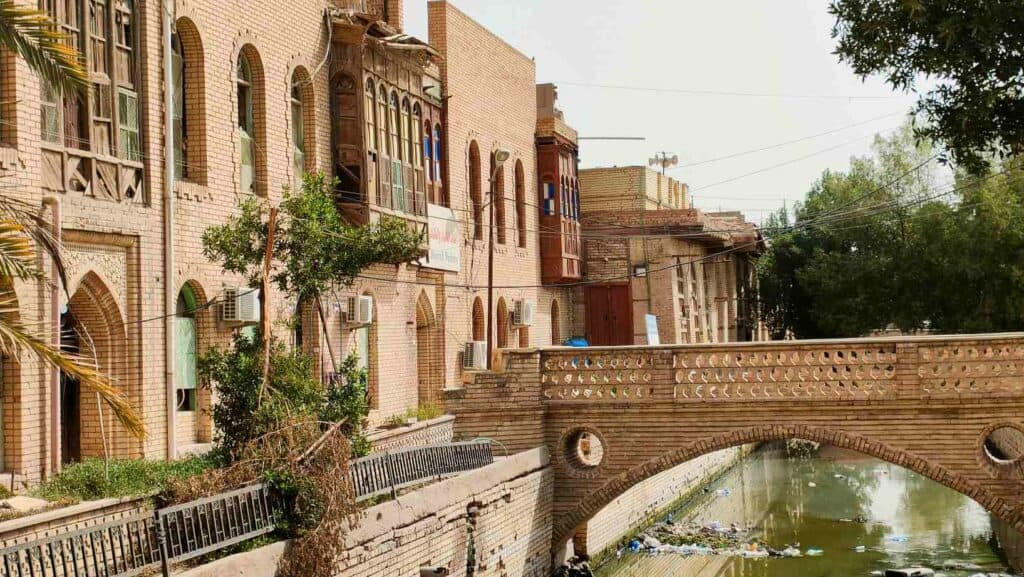
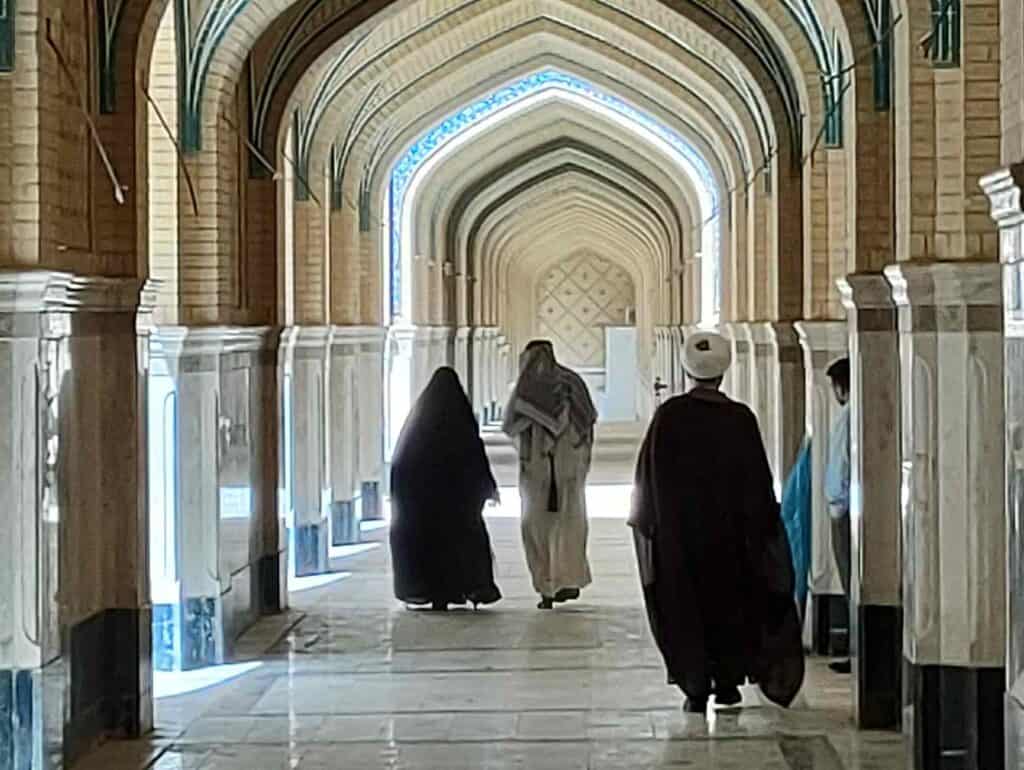
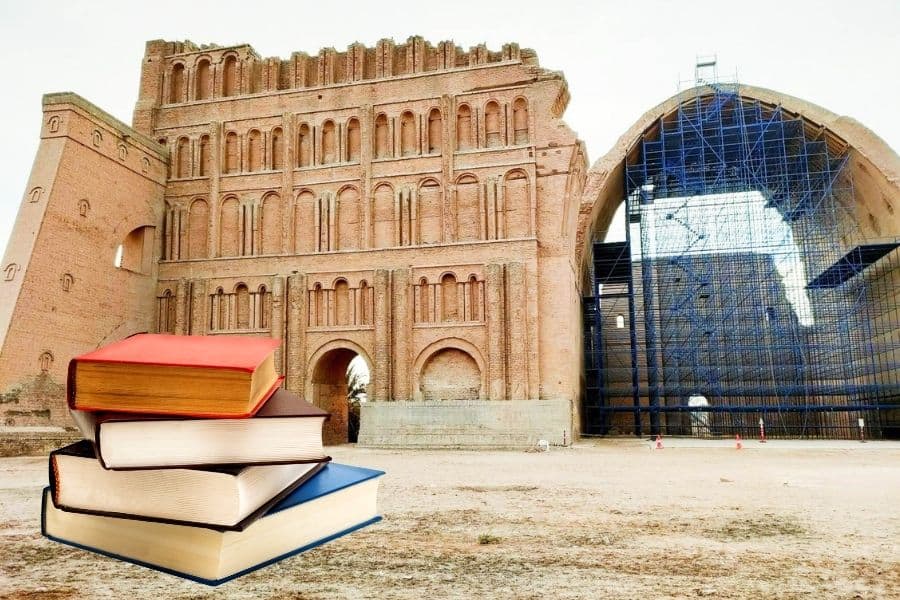
Hi Agnes,
First of all, I would like to thank you for the enormous work you do and which allows me to know exactly what to see according to my interests. You don’t recommend any hotels, is there a reason for that? Where did you stay in Baghdad?
Otherwise I have another question about the trip Baghdad Mosul. I saw in another blog that you have to have a local contact if you want to pass the military controls. Did you have this problem?
Hi Miguel! You are absolutely right. I will update the post with the accommodation. I was concentrating more on the sites. I stayed in Royal Gardin, which is a clean and lower-budget hotel around Firdos square. Another good option is hotel Diwan also in the same area. Both cost around 30-35 000 IQD.
Yes, you need local contacts for each of your destinations, just in case. I also mention it in my post about “all you need to know before traveling to Iraq”. Sometimes they just wave you through, but other times they ask for your local contact and even call him. It is good to have somebody also if you don’t speak Arabic and can help to translate. You can get in touch with locals through the Iraqi Travelers Cafe Facebook group. Once you meet somebody, it is easy because Iraqi people most often know somebody at your next destination, so everything just happens automatically after, even if it is hard to imagine from home. Hope this helps.